Greatest Athletes of All Time – Greatness Is Earned, Not Assumed
Great athletes do not simply win especially Greatest Athletes of All Time. They redefine what winning means. Across every sport, the most decorated individuals combine physical mastery with mental resilience. They train with precision, compete with consistency, and adapt with intelligence. Their greatness is built on verified results — medals, records, and sustained dominance. These athletes influence how others train, how coaches teach, and how fans understand sport. They often overcome injury, pressure, and systemic barriers. Their careers span decades, formats, and continents. They compete in individual and team settings. Their impact extends beyond competition into culture, advocacy, and innovation. Who is the greatest is a huge question and maybe to diverse to answer.
These Athletes Are Not Ranked in Any Order
This list is not a ranking. Comparing athletes across disciplines is not scientifically valid. Different sports reward different traits — speed, endurance, precision, or strategy. Rule changes, equipment evolution, and access to resources shape opportunity. Gender, disability, and geography also affect competition. The goal is not to compare. The goal is to understand how greatness is built. Each athlete listed has transformed their sport. Their legacy includes dominance, innovation, and cultural impact. This list reflects performance, not popularity. Every name here earned their place through results. Their stories offer insight into elite achievement. Their careers are studied by coaches, analysts, and historians. Their influence continues across generations. This editorial honors their facts, not opinions.
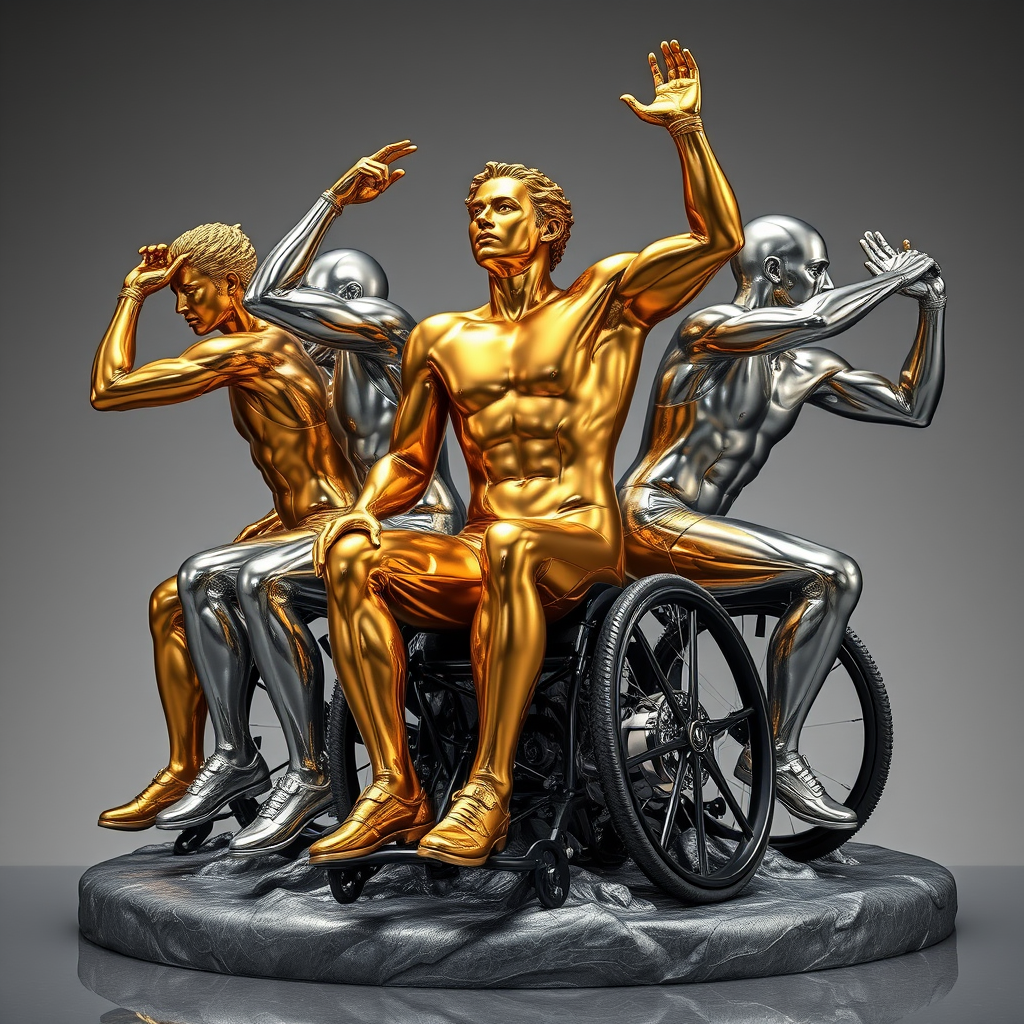
This Is About Sport – Not Controversy, Not Opinion
Every athlete featured in this editorial is included for one reason only — their verified performance in sport. This post does not explore personal controversies, legal matters, or off-field narratives. It does not speculate, editorialize, or judge. It focuses solely on what these athletes achieved through competition.
Their records, medals, and technical mastery are documented. Their impact on training, strategy, and global visibility is measurable. This is not a biography. It is not a debate. It is a study of greatness built through sport. Some athletes have faced public scrutiny. Others have lived private lives. None of that is relevant here. What matters is what they did in their discipline — how they trained, how they competed, and how they changed the game. This editorial honors sport itself. It is grounded in fact, not opinion. It is built on performance, not personality.
Sachin Tendulkar – Timing, Endurance, and Global Cricket Legacy
Sachin Tendulkar is the highest run scorer in international cricket history. He scored 100 international centuries across Tests and ODIs. Tendulkar had a long career and played 200 Test matches, the most by any cricketer. He debuted for India at age 16 in 1989. His technique emphasized balance, timing, and shot selection. Tendulkar won the ICC World Cup in 2011. He was the first player to score a double century in ODI cricket. His career spanned 24 years of elite competition. Tendulkar faced every major bowling attack across generations.
He was rewarded alot over his carrer and also was awarded the Bharat Ratna, India’s highest civilian honor. His mentorship influenced a new generation of Indian cricketers. Tendulkar retired in 2013 with over 34,000 international runs. He was known for humility and discipline on and off the field. His legacy includes statistical dominance and cultural reverence. Tendulkar remains a symbol of cricketing excellence and national pride.
| Attribute | Detail | Impact |
|---|---|---|
| International centuries | 100 | Most in history |
| Test matches | 200 | Longevity and consistency |
| ODI double century | First ever | Format innovation |
| World Cup win | 2011 | Team achievement |
| Honors | Bharat Ratna | National recognition |
Muhammad Ali – Strategy, Stamina, and Social Impact
Muhammad Ali won the world heavyweight title three times. He earned Olympic gold in 1960 as a light heavyweight. Ali’s footwork and jab redefined boxing technique. He defeated Sonny Liston, Joe Frazier, and George Foreman. His “rope-a-dope” strategy was used to exhaust opponents. Ali was banned from boxing for refusing military service in 1967. He returned to win the heavyweight title in 1974. Ali’s charisma and verbal style changed athlete-media dynamics. He was diagnosed with Parkinson’s disease in 1984.
Ali became a global humanitarian and peace advocate. His fights were broadcast worldwide, expanding boxing’s reach. He was named Sportsman of the Century by Sports Illustrated. Ali’s legacy includes athletic innovation and civil rights leadership. He remains one of the most studied figures in sport history. His greatness is built on courage, performance, and transformation.
| Attribute | Detail | Impact |
|---|---|---|
| World titles | 3 | Multi-era dominance |
| Olympic gold | 1960 | Early success |
| Comeback wins | Frazier, Foreman | Tactical brilliance |
| Activism | Vietnam War stance | Cultural influence |
| Legacy | Parkinson’s advocacy | Humanitarian impact |
David Beckham – Precision, Branding, and Global Football Reach
David Beckham is one of the most recognizable footballers of the modern era. He won league titles in England, Spain, France, and the United States. Beckham earned 115 caps for England, including 59 as captain. His free-kick accuracy and crossing technique were elite. He has played a diverse team carrer for Manchester United, Real Madrid, LA Galaxy, AC Milan, and PSG. Beckham won the UEFA Champions League in 1999.
He was known for discipline, fitness, and tactical awareness. Beckham’s brand partnerships expanded athlete marketing globally. He co-founded Inter Miami CF in Major League Soccer. His leadership style combined professionalism and media savvy. Beckham was awarded an OBE in 2003. He played in three FIFA World Cups. His legacy includes performance, entrepreneurship, and cultural influence. Beckham remains a symbol of precision and global appeal. His career reflects versatility and strategic branding.
| Attribute | Detail | Impact |
|---|---|---|
| International caps | 115 | National team leadership |
| League titles | 4 countries | Multi-format success |
| Signature skill | Free kicks | Tactical precision |
| Business ventures | Inter Miami CF | Sport entrepreneurship |
| Honors | OBE | National recognition |
Don Bradman – Consistency, Calculation, and Statistical Supremacy
Sir Donald Bradman holds the highest batting average in Test cricket history. His career average of 99.94 remains unmatched. Bradman had a big scoring career which saw him score 29 Test centuries in just 52 matches. He debuted for Australia in 1928. His technique emphasized footwork, timing, and mental calculation. Bradman scored 334 runs in a single innings at Leeds in 1930. He captained Australia from 1936 to 1948. His dominance shaped cricket’s global popularity. Bradman retired after the 1948 Ashes tour. He was knighted in 1949 for services to sport.
His training included solo ball-and-stump drills for reflex development. Bradman’s influence extended into cricket administration. He was named the greatest Australian in a national poll in 2001. His legacy includes statistical perfection and cultural reverence. Bradman remains a symbol of sporting excellence and national identity.
| Attribute | Detail | Impact |
|---|---|---|
| Test average | 99.94 | Highest in history |
| Test centuries | 29 | Efficiency and dominance |
| Captaincy | 1936–1948 | Strategic leadership |
| Honors | Knighthood | National recognition |
| Legacy | Cultural icon | Symbol of excellence |
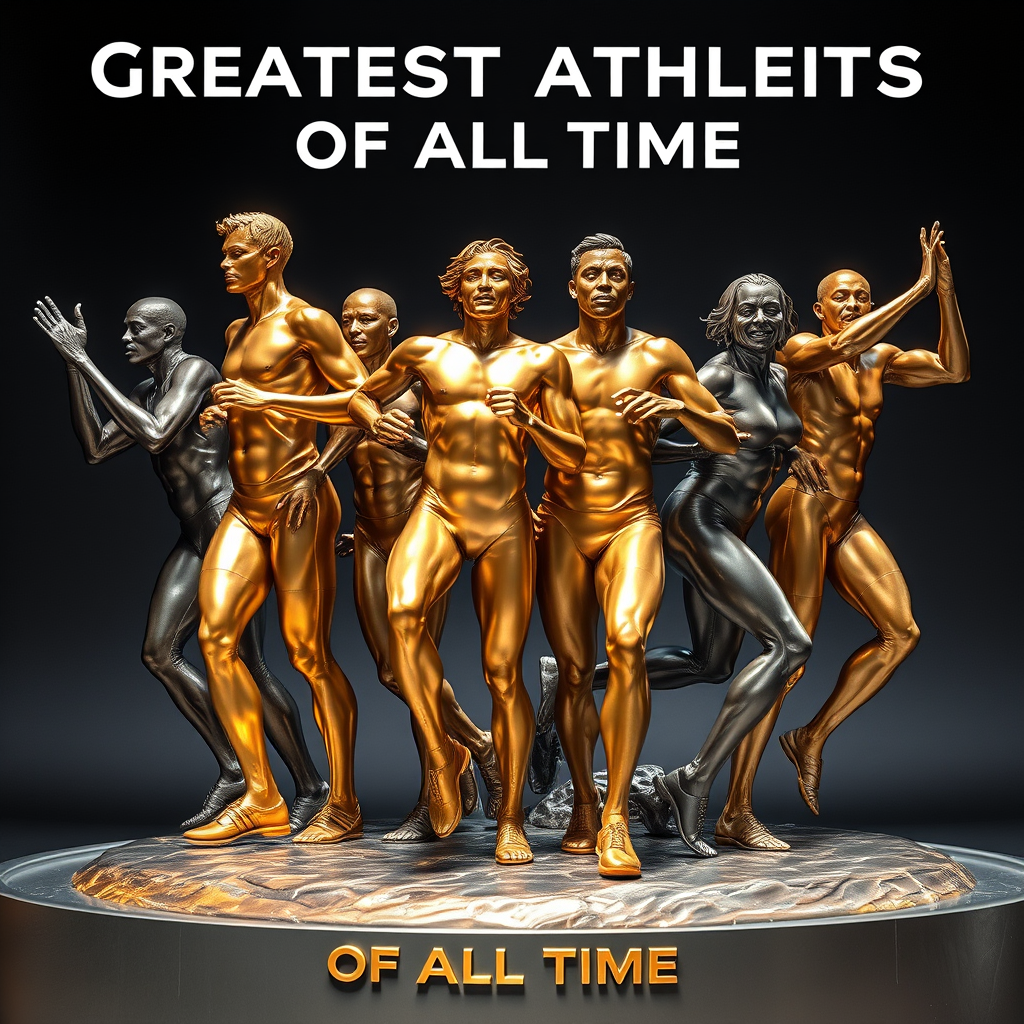
Mike Tyson – Power, Speed, and Boxing Intensity
Mike Tyson from young had something and became the youngest heavyweight champion at age 20. He won his first 19 professional fights by knockout. Tyson unified the WBA, WBC, and IBF titles in 1987. His punching power and head movement were unmatched. Tyson’s peak years included 37 consecutive wins. He was known for aggressive starts and short fight durations. Tyson served prison time in the 1990s and returned to boxing. He fought in 58 professional bouts, winning 50. His training included peek-a-boo defense and explosive conditioning.
Tyson’s influence extended into pop culture and media. He was recognised and inducted into the International Boxing Hall of Fame in 2011. His comeback fights drew global attention. Tyson later launched a cannabis business and podcast. His legacy includes intensity, controversy, and reinvention. Tyson remains a symbol of raw power and psychological complexity.
| Attribute | Detail | Impact |
|---|---|---|
| Youngest champion | Age 20 | Historic breakthrough |
| Knockout streak | 19 fights | Early dominance |
| Titles unified | WBA, WBC, IBF | Era-defining success |
| Career wins | 50 | Longevity and impact |
| Legacy | Media and reinvention | Cultural relevance |
Michael Jordan – Competitive Will and Global Influence
Michael Jordan had a huge carrer in NBA and won six NBA championships with the Chicago Bulls. He earned five regular-season MVP awards. Jordan led the league in scoring for 10 seasons. His career average of 30.1 points per game remains the highest in NBA history. He was selected to the All-Defensive First Team nine times. Jordan won an NCAA title with North Carolina in 1982. His clutch performances in playoff games became legendary.
He retired twice and returned to elite form both times. Jordan was inducted into the Basketball Hall of Fame in 2009. His Air Jordan brand revolutionized athlete marketing. Jordan’s leadership style combined intensity with strategic clarity. He elevated teammates through example and demand. His influence extended into business and philanthropy. Jordan’s legacy is built on dominance, resilience, and cultural reach. He remains a symbol of competitive greatness.
| Attribute | Detail | Impact |
|---|---|---|
| Scoring average | 30.1 PPG | Highest in NBA history |
| Championships | 6 | Team leadership and clutch play |
| MVP awards | 5 | Individual dominance |
| Defensive honors | 9 selections | Two-way excellence |
| Brand impact | Air Jordan |
Jackie Robinson – Courage, Skill, and Format Breakthrough
Jackie Robinson broke Major League Baseball’s color barrier in 1947. He became the first Black player in the modern era to play in the MLB. Robinson won the National League MVP award in 1949. His career batting average was .311, with over 1,500 hits and 200 stolen bases. He played a key role in the Brooklyn Dodgers’ 1955 World Series win. Robinson’s aggressive base running and defensive versatility redefined infield play. He endured racial abuse with composure, reshaping public perception of Black athletes. Robinson was recognised and inducted into the Baseball Hall of Fame in 1962.
His number 42 is retired across all MLB teams — the only player with that honor. MLB celebrates Jackie Robinson Day annually, with all players wearing #42. His debut is considered one of the most important moments in American sports history. Robinson became a civil rights advocate after retiring from baseball. He influenced policy, education, and public discourse on racial equality. His legacy shaped scouting, recruitment, and integration across leagues. Robinson remains a symbol of courage, excellence, and systemic change.
| Attribute | Detail | Impact |
|---|---|---|
| MLB debut | 1947 | Broke color barrier |
| MVP award | 1949 | Elite performance |
| Career stats | .311 average | All-time consistency |
| Legacy honor | #42 retired league-wide | Symbolic reverence |
| Cultural impact | Civil rights and integration | Format-defining transformation |
Michael Phelps – Endurance, Recovery, and Record-Breaking Precision
Michael Phelps is the most decorated Olympian in history. He won 28 Olympic medals, including 23 golds. Phelps competed in five Olympic Games from 2000 to 2016. He holds world records in the 100m butterfly, 200m butterfly, and 400m individual medley. His stroke efficiency and underwater phase were biomechanically optimized. Phelps trained with high-volume sets and lactate threshold monitoring. He used sleep tracking and recovery protocols to extend his peak years.
His 8 gold medals at the 2008 Beijing Olympics set a single-Games record. Phelps won 33 World Championship medals. He retired after the 2016 Rio Olympics. His breathing technique and pacing were studied by sports scientists. Phelps advocated for mental health awareness after retirement. He founded the Michael Phelps Foundation to support youth swimming. His legacy includes technical innovation and global visibility. Phelps’s greatness is built on endurance, precision, and verified dominance.
| Attribute | Detail | Impact |
|---|---|---|
| Olympic medals | 28 total | Most in history |
| Gold medals | 23 | Single-Games record in 2008 |
| World records | 3 active | Stroke efficiency and pacing |
| Career span | 2000–2016 | Longevity and consistency |
| Advocacy | Mental health and youth sport | Cultural leadership beyond swimming |
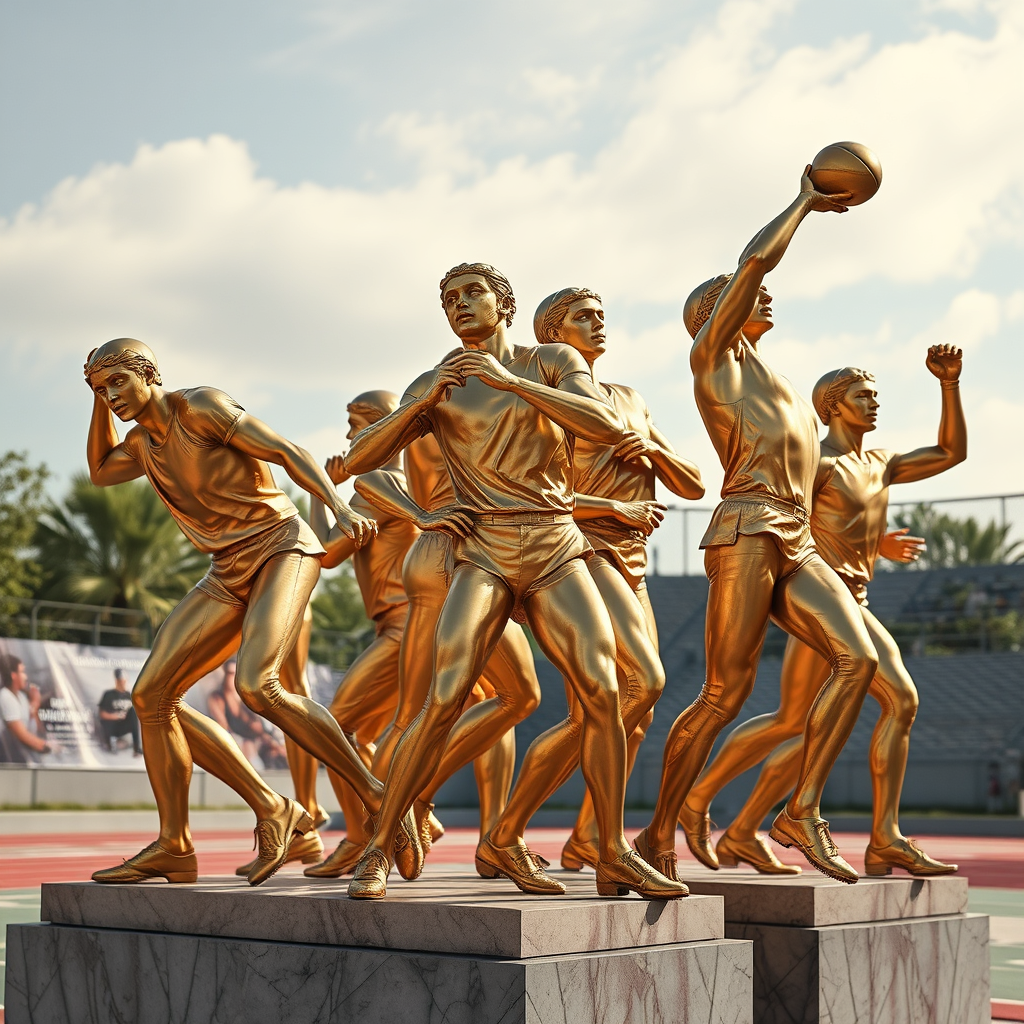
Michael Schumacher – Precision, Dominance, and Formula One Legacy
Michael Schumacher is one of the most successful drivers in Formula One history. He won seven World Drivers’ Championships, tied for the most in the sport. Schumacher earned five consecutive titles with Ferrari from 2000 to 2004. He holds the record for most fastest laps in F1 history. His driving style emphasized braking control, cornering precision, and tire management.
Schumacher won 91 Grand Prix races across his career. He debuted in 1991 with Jordan and quickly signed with Benetton. He won his first championship in 1994 and repeated in 1995. Schumacher’s fitness and technical feedback transformed team dynamics. He retired in 2006 and returned to F1 with Mercedes in 2010. His influence shaped Ferrari’s rise in the early 2000s. Schumacher suffered a traumatic brain injury in a skiing accident in 2013. His legacy includes performance, innovation, and resilience. He remains a symbol of speed and strategic mastery. Schumacher’s career reflects dominance and technical evolution.
| Attribute | Detail | Impact |
|---|---|---|
| World titles | 7 | Most in F1 history (tied) |
| Grand Prix wins | 91 | Career dominance |
| Team success | Ferrari | Era-defining partnership |
| Driving style | Precision and control | Technical innovation |
| Legacy | Post-retirement influence | Cultural and sporting icon |
Emma McKeon – Sprint Range, Consistency, and Olympic Breakthrough
Emma McKeon is Australia’s most decorated Olympian. She has won 11 Olympic medals, including 5 golds. McKeon earned 7 medals at the Tokyo 2020 Olympics, the most by any athlete at those Games. She specializes in freestyle and butterfly sprint events. Her stroke technique emphasizes rhythm, reach, and underwater efficiency. McKeon trains with high-intensity intervals and recovery protocols. She holds multiple Commonwealth Games records.
Her pacing and turn execution are among the best in elite swimming. McKeon competed in both individual and relay formats. She has won over 20 international medals across major championships. Her consistency across heats and finals is statistically rare. McKeon advocates for athlete wellbeing and mental health. She was awarded the Medal of the Order of Australia in 2022. Her legacy includes performance, humility, and national pride. McKeon remains a symbol of precision and endurance.
| Attribute | Detail | Impact |
|---|---|---|
| Olympic medals | 11 | Most by an Australian |
| Tokyo 2020 | 7 medals | Single-Games record |
| Stroke focus | Freestyle and butterfly | Sprint versatility |
| Honors | OAM | National recognition |
| Advocacy | Mental health | Athlete wellbeing leadership |
Diede de Groot – Control, Consistency, and Wheelchair Tennis Supremacy
Diede de Groot is the most dominant wheelchair tennis player of her generation. She has won all four Grand Slam singles titles in multiple seasons. De Groot achieved the calendar-year Golden Slam in 2021. She has held the world No. 1 ranking in both singles and doubles. Her playing style emphasizes control, spin, and tactical depth. De Groot trains with adaptive drills and chair mobility routines.
She has won over 30 Grand Slam titles across formats. Her serve and return patterns are optimized for surface variation. De Groot won Paralympic gold in singles and doubles at Tokyo 2020. Her consistency across hard, clay, and grass courts is unmatched. She frequently partners with Aniek van Koot in doubles. De Groot’s influence extends into youth para-sport programs. She was named ITF World Champion multiple times. Her legacy includes technical mastery and global visibility. De Groot remains a symbol of elite wheelchair tennis.
| Attribute | Detail | Impact |
|---|---|---|
| Grand Slam titles | 30+ | Singles and doubles dominance |
| Golden Slam | 2021 | Historic achievement |
| World rankings | No. 1 in both formats | Sustained excellence |
| Paralympic medals | 2 golds | Multi-format success |
| Advocacy | Youth para-sport | Legacy building and mentorship |
Babe Ruth – Power, Personality, and Baseball Transformation
Babe Ruth is one of the most iconic figures in baseball history. He hit 714 career home runs, a record that stood for nearly four decades. Ruth began his career as a pitcher with the Boston Red Sox. He transitioned to a full-time hitter with the New York Yankees. Ruth won seven World Series titles across his career. His slugging percentage of .690 remains one of the highest in MLB history. Ruth’s charisma helped popularize baseball in the 1920s. He was among the first athletes to become a national celebrity.
Ruth’s training emphasized batting mechanics and timing. He led the league in home runs 12 times. Ruth’s off-field persona shaped media coverage of sport. He was inducted into the Baseball Hall of Fame in 1936. His legacy includes performance, personality, and cultural impact. Ruth remains a symbol of power and transformation. His career redefined the role of the hitter in baseball.
| Attribute | Detail | Impact |
|---|---|---|
| Home runs | 714 | Historic power |
| World Series titles | 7 | Team success |
| Career shift | Pitcher to hitter | Role redefinition |
| Cultural impact | 1920s icon | Sport popularization |
| Hall of Fame | 1936 | Foundational legacy |
Joe DiMaggio – Grace, Streaks, and American Iconography
Joe DiMaggio had a huge carrer and is best known for his 56-game hitting streak in 1941. He played his entire career with the New York Yankees. DiMaggio won nine World Series titles and three MVP awards. His career batting average was .325. DiMaggio was known for elegant fielding and powerful hitting. He served in the U.S. military during World War II. DiMaggio was selected to the All-Star team in every season he played.
His swing mechanics emphasized balance and timing. He retired in 1951 after 13 seasons. DiMaggio’s public image was shaped by his marriage to Marilyn Monroe. He was inducted into the Baseball Hall of Fame in 1955. His legacy includes performance, patriotism, and cultural symbolism. DiMaggio’s streak remains one of baseball’s most unbreakable records. He was named to MLB’s All-Century Team in 1999. DiMaggio remains a symbol of grace and American identity.
| Attribute | Detail | Impact |
|---|---|---|
| Hitting streak | 56 games | MLB record |
| World Series titles | 9 | Team dominance |
| Career average | .325 | Consistency and skill |
| Military service | WWII | National pride |
| Legacy | Cultural icon |
Serena Williams – Power, Strategy, and Multi-Format Mastery
Serena Williams is the most decorated female tennis player in the Open Era. She won 23 Grand Slam singles titles. Williams also won 14 Grand Slam doubles titles with her sister Venus. She held the world No. 1 ranking for 319 weeks. Her serve speed and placement are among the most effective in tennis history. Williams won four Olympic gold medals. She returned to elite competition after childbirth in 2017.
Her career spanned over two decades. Williams overcame injuries and media scrutiny. She changed perceptions of strength and femininity in sport. Her advocacy expanded visibility for Black women in tennis. Williams’s footwork and shot selection evolved with age. She defeated multiple generations of top-ranked players. Her fashion and branding influenced athlete marketing. Williams’s legacy includes dominance, resilience, and cultural transformation.
| Attribute | Detail | Impact |
|---|---|---|
| Grand Slam singles | 23 titles | Most in Open Era |
| Doubles titles | 14 | Partnership excellence |
| World No. 1 ranking | 319 weeks | Sustained dominance |
| Olympic medals | 4 golds | Multi-format success |
| Cultural influence | Advocacy and branding | Expanded visibility in sport and media |
Trischa Zorn – Adaptation, Efficiency, and Paralympic Supremacy
Trischa Zorn is the most decorated Paralympian in history. She won 55 medals, including 41 golds, across seven Paralympic Games. Zorn competed in swimming events for visually impaired athletes. Her dominance spanned over two decades. She broke multiple world records in backstroke, freestyle, and medley events. Zorn trained with adapted techniques and sensory cues. Her starts and turns were optimized for tactile feedback. She competed against younger athletes and maintained elite form.
Zorn’s consistency and versatility were unmatched. She inspired generations of para-athletes. Her legacy includes advocacy for disability inclusion in sport. Zorn was honored and inducted into the Paralympic Hall of Fame in 2012. Her training emphasized efficiency and control. She mastered pacing and stroke rhythm. Zorn’s greatness is built on performance, adaptation, and impact.
| Attribute | Detail | Impact |
|---|---|---|
| Paralympic medals | 55 total | Most in history |
| Gold medals | 41 | Multi-Games dominance |
| Disciplines | Multiple strokes | Versatility and technical mastery |
| Career span | 1980–2004 | Longevity and consistency |
| Advocacy | Disability inclusion | Expanded access and visibility in sport |
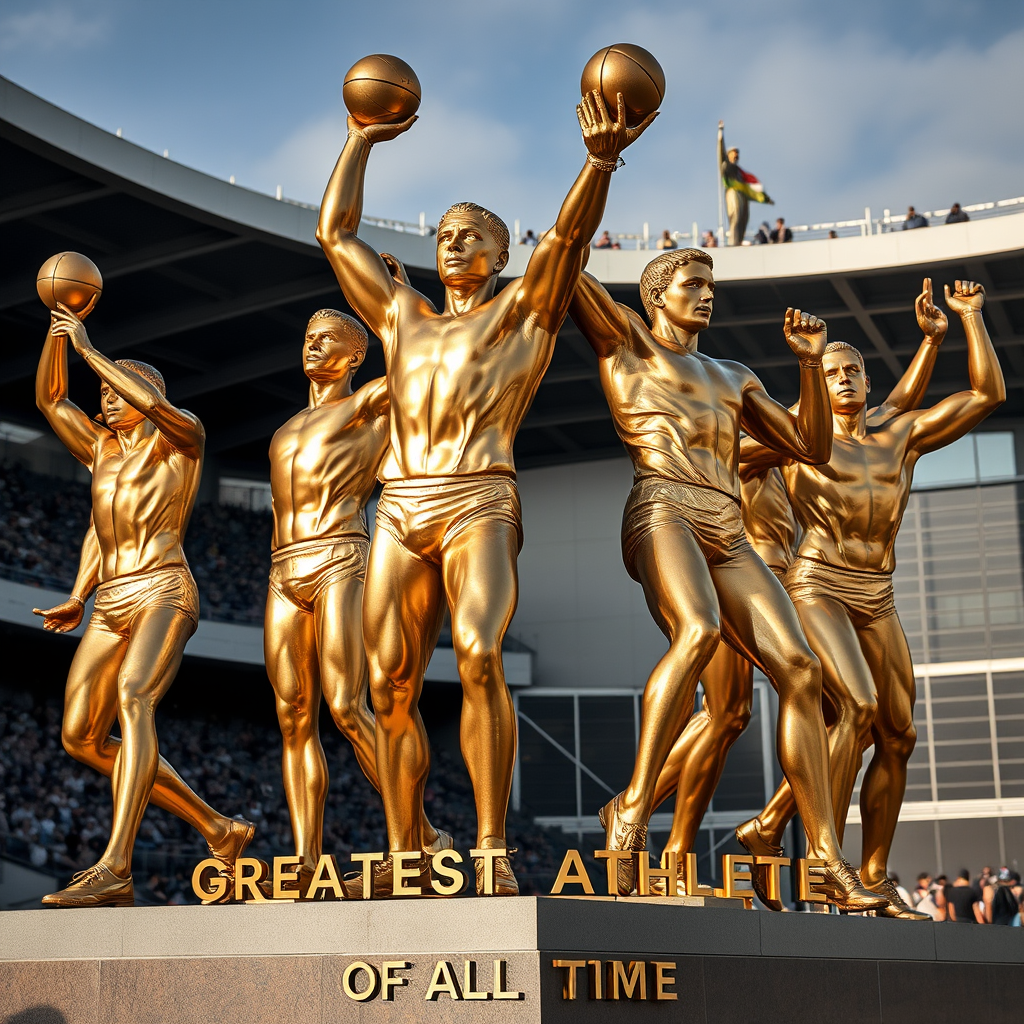
Usain Bolt – Velocity, Rhythm, and Sprinting Supremacy
Usain Bolt is the fastest sprinter ever recorded. He holds the world records in both the 100-meter and 200-meter events. Bolt won eight Olympic gold medals over his career across three Games. His 9.58-second 100-meter run in 2009 remains unbeaten. Bolt’s stride length and turnover rate were biomechanically unique. He trained with Jamaican sprint coaches and physiotherapists. His starts improved over time despite early weaknesses. Bolt’s technique emphasized relaxation and rhythm.
He dominated both individual and relay formats. His charisma and sportsmanship elevated global interest in athletics. Bolt avoided major injuries throughout his peak years. He retired after the 2017 World Championships. His legacy includes youth inspiration and global visibility. Bolt remains a symbol of speed and joy in sport. His greatness is built on records, personality, and sustained dominance.
| Attribute | Detail | Impact |
|---|---|---|
| World record – 100m | 9.58 seconds | Fastest time ever recorded |
| Olympic golds | 8 | Triple golds across three Games |
| Relay success | 4x100m wins | Team leadership and execution |
| Biomechanics | Long stride and turnover | Unique sprinting efficiency |
| Cultural impact | Global icon | Elevated visibility of track and field |
Katie Ledecky – Distance Control and Stroke Efficiency
Katie Ledecky is one of the most successful distance swimmers in history. She has won 10 Olympic medals, including 7 golds. Ledecky holds world records in the 800-meter and 1500-meter freestyle. Her stroke rate and pacing are optimized for endurance. She won her first Olympic gold at age 15. Ledecky trains with high-volume, low-rest sets. Her turns and underwater phases are technically precise. She has won 20 World Championship medals. Ledecky’s dominance spans over a decade.
She consistently wins by large margins in distance events. Her training includes altitude camps and lactate threshold work. Ledecky’s technique emphasizes rhythm and control. She rarely deviates from her race plan. Her influence extends into youth swimming programs. Ledecky’s legacy includes consistency, efficiency, and leadership.
| Attribute | Detail | Impact |
|---|---|---|
| Olympic medals | 10 total | Multi-Games success |
| World records | 800m, 1500m freestyle | Distance dominance |
| World Championship medals | 20 | Sustained international excellence |
| Stroke technique | High-efficiency | Optimized for endurance |
| Youth influence | Mentorship | Expanded participation in swimming |
Roger Federer – Elegance, Adaptation, and Strategic Precision
Roger Federer is one of the most successful tennis players of the modern era. He won 20 Grand Slam singles titles across all surfaces. Federer held the world No. 1 ranking for 310 weeks. He won eight Wimbledon titles, the most in history. His footwork and timing are considered textbook examples of efficiency. Federer’s serve placement and variety disrupted opponents’ rhythm.
He adapted his game over time to counter younger rivals. Federer’s rivalry with Nadal and Djokovic defined an era. He won the ATP Fan Favorite award for 19 consecutive years. Federer competed in over 1,500 professional matches. He maintained elite form into his late 30s. His injury recovery protocols were widely studied. Federer’s style emphasized minimalism and control. He retired in 2022 after the Laver Cup. His legacy includes technical elegance and global respect.
| Attribute | Detail | Impact |
|---|---|---|
| Grand Slam titles | 20 | Multi-surface mastery |
| Wimbledon wins | 8 | Grass court dominance |
| World No. 1 ranking | 310 weeks | Sustained excellence |
| Rivalries | Nadal, Djokovic | Elevated competitive standards |
| Retirement | 2022 | End of a historic era |
Simone Biles – Aerial Control and Mental Strength
Simone Biles is the most decorated gymnast in World Championship history. She has won 25 World Championship medals, including 19 golds. Biles earned seven Olympic medals across two Games. She is the only gymnast to perform several skills named after her. Her routines include the Yurchenko double pike vault and triple-double on floor. Biles’s power-to-weight ratio is among the highest in gymnastics.
She trains with advanced air awareness and landing control. Her tumbling passes exceed standard difficulty ratings. Biles withdrew from events at the Tokyo Olympics to prioritize mental health. Her decision sparked global conversations about athlete wellbeing. She returned to competition and won the 2023 World All-Around title. Biles’s technique combines explosive strength with precise timing. Her beam and vault scores consistently lead international rankings. She has influenced coaching methods and safety protocols. Biles’s legacy includes innovation, resilience, and advocacy.
| Attribute | Detail | Impact |
|---|---|---|
| World Championship medals | 25 | Most in history |
| Olympic medals | 7 | Multi-event excellence |
| Named skills | 5 | Technical innovation |
| Mental health advocacy | Tokyo 2020 | Cultural shift in athlete care |
| Return to form | 2023 World title | Sustained elite performance |
Daniel Dias – Efficiency, Endurance, and Paralympic Versatility
Daniel Dias is Brazil’s most decorated Paralympic swimmer. He won 27 Paralympic medals, including 14 golds. Dias competed in freestyle, backstroke, and medley events. He was born with malformed upper and lower limbs. Dias began swimming at age 16 and quickly rose to international prominence. He won multiple golds at the 2008, 2012, and 2016 Paralympic Games. His stroke technique was adapted for limb differences. Dias trained with biomechanical specialists and physiotherapists.
He became a symbol of para-sport excellence in South America. Dias retired after the Tokyo 2020 Paralympics. He received the Laureus Award for Sportsperson with a Disability in 2009. Dias’s pacing and turn efficiency were key to his success. He competed in short and long-distance formats. His advocacy expanded access to adaptive swimming programs. Dias’s legacy includes versatility, consistency, and national pride.
| Attribute | Detail | Impact |
|---|---|---|
| Paralympic medals | 27 | Most for Brazil |
| Gold medals | 14 | Multi-Games dominance |
| Disciplines | Freestyle, backstroke, medley | Technical adaptability |
| Career span | 2008–2021 | Longevity and consistency |
| Advocacy | Adaptive sport | Expanded access in Brazil |
Marta Vieira da Silva – Vision, Leadership, and Global Scoring Records
Marta is the highest goal scorer in FIFA World Cup history across all genders. She has scored 17 goals in five World Cup tournaments. Marta won six FIFA World Player of the Year awards. She led Brazil to Olympic silver medals in 2004 and 2008. Her dribbling and passing are central to her playmaking style. Marta has played professionally in Brazil, Sweden, and the United States. She holds the record for most goals in Olympic women’s football. Her leadership has shaped women’s sport in Latin America.
Marta advocates for gender equity in football. Her technique emphasizes agility, timing, and spatial awareness. She has captained Brazil in multiple international tournaments. Her club career spans over two decades. Marta’s influence extends into youth development programs. She was named a UN Women Goodwill Ambassador in 2018. Her legacy includes scoring records, leadership, and global advocacy.
| Attribute | Detail | Impact |
|---|---|---|
| World Cup goals | 17 | Most in tournament history |
| FIFA awards | 6 | Individual excellence |
| Olympic medals | 2 silver | National team leadership |
| Club career | Multi-continent | Versatility and longevity |
| Advocacy | UN Women Ambassador | Gender equity in sport |
Novak Djokovic – Resilience, Adaptation, and Mental Precision
Novak Djokovic holds the record for most Grand Slam singles titles in men’s tennis. He has won 24 Grand Slam titles across all surfaces. Djokovic has held the world No. 1 ranking for over 400 weeks. He is the only male player to win each Grand Slam at least three times. His return of serve is considered one of the best in tennis history. Djokovic’s flexibility and movement allow him to defend from extreme positions.
He has won 39 ATP Masters 1000 titles. Djokovic’s diet and recovery protocols are tailored for endurance. He has defeated every top-ranked player of his era. His mental resilience is evident in five-set comebacks. Djokovic has won titles on hard, clay, and grass courts. He advocates for player representation through the PTPA. His rivalry with Federer and Nadal defined a generation. Djokovic’s legacy includes dominance, adaptability, and strategic clarity.
| Attribute | Detail | Impact |
|---|---|---|
| Grand Slam titles | 24 | Most in men’s history |
| World No. 1 ranking | 400+ weeks | Longest tenure |
| Surface versatility | All three | Multi-format mastery |
| Return of serve | Elite | Tactical advantage |
| Advocacy | PTPA co-founder | Player rights and representation |
Ellie Simmonds – Technique, Advocacy, and Paralympic Breakthroughs
Ellie Simmonds is one of Britain’s most successful Paralympic swimmers. She won five Paralympic gold medals across three Games. Simmonds competed in the S6 classification for athletes with short stature. She won her first gold at age 13 in Beijing 2008. Her stroke technique was adapted for reduced limb length. Simmonds trained with high-frequency sets and underwater drills. She broke world records in the 200m individual medley and 400m freestyle. Her starts and turns were optimized for minimal drag.
Simmonds became a public figure in the UK after London 2012. She received the BBC Young Sports Personality of the Year award. Her advocacy expanded visibility for athletes with dwarfism. Simmonds retired after the Tokyo 2020 Paralympics. She has worked in broadcasting and disability education. Her legacy includes technical mastery and cultural impact. Simmonds remains a symbol of resilience and inclusion.
| Attribute | Detail | Impact |
|---|---|---|
| Paralympic golds | 5 | Multi-Games success |
| World records | 2 | Stroke efficiency and pacing |
| Classification | S6 | Adapted technique for short stature |
| Public recognition | BBC award | Youth inspiration and visibility |
| Advocacy | Disability education | Expanded awareness and inclusion |

Rafael Nadal – Grit, Topspin, and Clay Court Supremacy
Rafael Nadal is the most successful clay court player in tennis history. He has won 14 French Open titles, a record for any single Grand Slam. Nadal holds 22 Grand Slam singles titles overall. His topspin-heavy forehand is a signature weapon. Nadal’s footwork and court coverage are optimized for long rallies. He has won Olympic gold medals in singles and doubles. Nadal’s serve and net play improved significantly over time. He has battled chronic injuries throughout his career.
His mental toughness is evident in five-set matches and comebacks. Nadal has won Davis Cup titles with Spain. He trains with intensity and recovery discipline. His rivalry with Federer and Djokovic elevated tennis standards. Nadal’s sportsmanship is widely respected. He founded a tennis academy in Mallorca. His legacy includes clay dominance, resilience, and mentorship.
| Attribute | Detail | Impact |
|---|---|---|
| French Open titles | 14 | Most in history |
| Grand Slam titles | 22 | Multi-surface excellence |
| Olympic medals | 2 golds | Singles and doubles success |
| Forehand technique | Topspin-heavy | Tactical control and depth |
| Academy | Mallorca | Youth development and legacy building |
Jackie Joyner-Kersee – Multievent Mastery and Athletic Longevity
Jackie Joyner-Kersee is one of the most successful track and field athletes in history. She won three Olympic gold medals and six Olympic medals overall. Joyner-Kersee holds the world record in the heptathlon with 7,291 points. She also won gold in the long jump at the 1988 Seoul Olympics. Her versatility across seven events defined her dominance. She competed in four Olympic Games from 1984 to 1996. Joyner-Kersee trained with biomechanical analysis and event-specific drills. Her sprinting, jumping, and throwing techniques were optimized for efficiency. She overcame asthma throughout her career.
Her mental preparation included visualization and tactical planning. Joyner-Kersee won multiple World Championship medals. She founded a youth foundation focused on education and sport. Her legacy includes multievent excellence and community leadership. She was named Sports Illustrated’s greatest female athlete of the 20th century. Joyner-Kersee’s greatness is built on range, resilience, and sustained performance.
| Attribute | Detail | Impact |
|---|---|---|
| Heptathlon record | 7,291 points | World record since 1988 |
| Olympic medals | 6 total | Multievent dominance |
| Career span | 1984–1996 | Longevity across four Games |
| Health challenge | Asthma | Overcame adversity |
| Advocacy | Youth foundation | Community development and mentorship |
LeBron James – Versatility, Leadership, and Statistical Milestones
LeBron James is one of the most complete basketball players in NBA history. He has won four NBA championships and four MVP awards. James is the all-time leading scorer in NBA history. He has played over 20 seasons with sustained elite performance. James has appeared in 10 NBA Finals. His passing and court vision rival elite point guards. He has played multiple positions, including forward and guard. James’s training includes biomechanics, recovery science, and nutrition.
He won two Olympic gold medals with Team USA. His leadership style combines mentorship and strategic control. James founded the I PROMISE School for underserved youth. He has been selected to the All-NBA First Team 13 times. His playoff scoring and assist records are among the highest. James’s branding and media ventures expanded athlete entrepreneurship. His legacy includes versatility, longevity, and cultural impact.
| Attribute | Detail | Impact |
|---|---|---|
| NBA scoring record | All-time leader | Career consistency and volume |
| Championships | 4 | Multi-team success |
| Olympic medals | 2 golds | International dominance |
| Career span | 20+ seasons | Sustained elite performance |
| Advocacy | I PROMISE School | Education and community leadership |
Sarah Storey – Dual-Sport Dominance and Paralympic Longevity
Sarah Storey is Britain’s most decorated Paralympian. She has won 17 Paralympic gold medals across swimming and cycling. Storey began her career as a swimmer, winning five golds before switching sports. She transitioned to cycling in 2005 and continued winning at the highest level. Storey competed in eight Paralympic Games from 1992 to 2020. Her training includes altitude conditioning and power output tracking. She holds multiple world records in para-cycling.
Storey’s technique emphasizes cadence control and aerodynamic positioning. She won gold in both track and road cycling formats. Her recovery protocols include physiotherapy and nutrition planning. Storey advocates for disability inclusion and women’s sport. She was appointed Dame Commander of the Order of the British Empire in 2013. Her versatility across disciplines is unmatched in para-sport. Storey’s legacy includes dual-sport mastery and policy influence. Her career reflects adaptation, endurance, and elite execution.
| Attribute | Detail | Impact |
|---|---|---|
| Paralympic golds | 17 | Most for Great Britain |
| Sports | Swimming and cycling | Dual-discipline excellence |
| Career span | 1992–2020 | Longevity across formats |
| Honors | Dame Commander | National recognition |
| Advocacy | Disability and gender equity | Policy and visibility impact |
Tom Brady – Tactical Intelligence and Championship Consistency
Tom Brady is the most successful quarterback in NFL history. He won seven Super Bowl titles, more than any other player. Brady played 23 seasons in the NFL, primarily with the New England Patriots. He holds records for most career touchdown passes and passing yards. Brady was named Super Bowl MVP five times. His pre-snap reads and defensive recognition were elite. He trained with a focus on mobility, recovery, and cognitive drills. Brady’s diet and sleep protocols were central to his longevity.
He led game-winning drives in multiple championship games. Brady’s leadership style emphasized accountability and preparation. He was selected to the Pro Bowl 15 times. His playoff win total is the highest in NFL history. Brady retired in 2023 after a final season with the Tampa Bay Buccaneers. His legacy includes strategic mastery and sustained excellence. Brady’s greatness is built on execution, adaptation, and mental acuity.
| Attribute | Detail | Impact |
|---|---|---|
| Super Bowl wins | 7 | Most in NFL history |
| Career span | 23 seasons | Longevity and consistency |
| MVP awards | 5 Super Bowl MVPs | Clutch performance |
| Passing records | Yards and touchdowns | Statistical dominance |
| Leadership | Preparation and accountability | Team cohesion and success |
Abby Wambach – Impact, Headers, and Leadership in Women’s Football
Abby Wambach is one of the most prolific goal scorers in international football history. She scored 184 goals for the United States national team, the most by any American player. Wambach won two Olympic gold medals in 2004 and 2012. She was recognised and named FIFA World Player of the Year in 2012. Her aerial ability and heading technique were unmatched in women’s football. Wambach played in four FIFA Women’s World Cups. She helped lead the U.S. to victory in the 2015 World Cup.
Her leadership extended beyond the pitch into team culture and advocacy. Wambach’s playing style emphasized physicality, timing, and positioning. She retired in 2015 after earning 255 international caps. Her post-career work includes books and public speaking on equality and leadership. Wambach was inducted into the National Soccer Hall of Fame in 2018. She has supported LGBTQ+ rights and athlete mental health initiatives. Her legacy includes scoring records and cultural influence. Wambach remains a symbol of resilience and visibility in sport.
| Attribute | Detail | Impact |
|---|---|---|
| International goals | 184 | Most by any U.S. player |
| Olympic medals | 2 golds | Multi-Games success |
| World Cup win | 2015 | Team leadership and execution |
| FIFA award | 2012 | Global recognition |
| Advocacy | Equality and mental health | Cultural leadership beyond sport |

Tanni Grey-Thompson – Wheelchair Racing and Policy Advocacy
Tanni Grey-Thompson is one of Britain’s most successful para-athletes. She won 11 Paralympic gold medals in wheelchair racing. Grey-Thompson competed in five Paralympic Games from 1988 to 2004. Her events included the 100m, 200m, 400m, and 800m races. She also won six London Marathon titles. Her training emphasized upper-body strength and propulsion efficiency. Grey-Thompson’s starts and turns were optimized for track geometry. She was appointed to the House of Lords in 2010.
Her advocacy focuses on disability rights and inclusive sport policy. Grey-Thompson has served on multiple national sport committees. She received the BBC Sports Personality of the Year Lifetime Achievement Award. Her legacy includes performance, governance, and education. She has mentored younger para-athletes and coaches. Grey-Thompson’s career reflects technical mastery and civic leadership. Her influence continues in sport and public service. She remains a symbol of excellence and equity.
| Attribute | Detail | Impact |
|---|---|---|
| Paralympic golds | 11 | Multi-Games dominance |
| London Marathon wins | 6 | Endurance and consistency |
| Career span | 1988–2004 | Longevity and versatility |
| Public service | House of Lords | Policy and advocacy leadership |
| Mentorship | Para-athletes and coaches | Legacy building and education |
Cristiano Ronaldo – Power, Precision, and Global Scoring Records
Cristiano Ronaldo is one of the most successful footballers of the modern era. He has scored over 850 career goals across club and international matches. Ronaldo has won five Ballon d’Or awards. He won UEFA Champions League titles with Manchester United and Real Madrid. Ronaldo led Portugal to victory in Euro 2016 and the 2019 Nations League. His sprint speed and vertical leap are among the highest recorded in football. He has played in five FIFA World Cups. Ronaldo’s training includes strength, recovery, and tactical drills. He holds the record for most goals in UEFA Champions League history.
His branding and social media presence are the largest among athletes. Ronaldo has played professionally in England, Spain, Italy, and Saudi Arabia. His leadership style combines intensity and discipline. Over the years he has won league titles in three different countries. Ronaldo’s legacy includes scoring records and global influence. His career reflects adaptation, longevity, and elite execution.
| Attribute | Detail | Impact |
|---|---|---|
| Career goals | 850+ | All-time scoring leader |
| Ballon d’Or awards | 5 | Individual excellence |
| International titles | Euro 2016, Nations League | National team success |
| Champions League goals | Most in history | European dominance |
| Global reach | Multi-league career | Branding and international influence |
Natalie du Toit – Open Water Mastery and Paralympic Integration
Natalie du Toit is one of South Africa’s most accomplished swimmers. She has competed in both the Paralympic and Olympic Games. Du Toit lost her left leg in a motorcycle accident at age 17. She returned to elite competition within a year. She won 13 Paralympic gold medals across multiple strokes. Du Toit qualified for the 2008 Beijing Olympics in open water swimming. She became the first amputee to compete in the Olympics without a prosthetic. Her stroke technique was adapted for asymmetrical propulsion.
Du Toit trained with able-bodied swimmers and coaches. Her pacing and endurance were optimized for long-distance formats. She won multiple golds at the Commonwealth Games. Du Toit received the Laureus Sportsperson of the Year with a Disability award. Her legacy includes integration and visibility in elite sport. She retired in 2012 after a decade of international success. Du Toit remains a symbol of resilience and innovation.
| Attribute | Detail | Impact |
|---|---|---|
| Paralympic golds | 13 | Multi-Games dominance |
| Olympic qualification | 2008 | Historic integration |
| Commonwealth medals | Multiple golds | Regional excellence |
| Stroke adaptation | Asymmetrical propulsion | Technical innovation |
| Advocacy | Disability visibility | Cultural and athletic impact |
Aly Raisman – Artistry, Advocacy, and Olympic Consistency
Aly Raisman is one of the most decorated American gymnasts of the 21st century. She won six Olympic medals, including three golds across two Games. Raisman captained the U.S. gymnastics team in both London 2012 and Rio 2016. Her floor routines were known for musicality, power, and precision. She earned gold in the team and floor exercise events in 2012. Raisman returned in 2016 to win team gold and individual silver on floor and all-around. Her beam and vault scores consistently ranked among the top globally. Raisman trained with high repetition and mental visualization techniques.
She was known for composure under pressure and clean execution. After retiring, she became a leading voice for athlete safety and reform. Raisman testified before Congress on abuse in sport. She has worked with multiple advocacy organizations for youth protection. Her legacy includes performance, leadership, and cultural change. Raisman remains a symbol of strength and accountability. Her career reflects excellence and integrity.
| Attribute | Detail | Impact |
|---|---|---|
| Olympic medals | 6 | Multi-Games success |
| Team captaincy | 2012, 2016 | Leadership and cohesion |
| Floor exercise | Gold medalist | Artistic and technical mastery |
| Advocacy | Athlete safety | Cultural reform in sport |
| Legacy | Integrity and resilience | Influence beyond competition |
Florence Griffith-Joyner – Speed, Style, and Sprinting Records
Florence Griffith-Joyner holds the world records in the 100m and 200m sprints. She won three Olympic gold medals at the 1988 Seoul Games. Her 10.49-second 100m time remains unbeaten. Griffith-Joyner’s sprinting style combined explosive starts with fluid stride mechanics. She trained with resistance drills and interval sets. Her fashion choices — including one-legged suits and painted nails — redefined athlete visibility.
She won silver in the 200m at the 1984 Los Angeles Olympics. Griffith-Joyner retired shortly after her peak season. She served on the President’s Council on Physical Fitness. Her legacy includes performance, creativity, and cultural impact. She was inducted into the USA Track & Field Hall of Fame. Her training emphasized acceleration and relaxation. Griffith-Joyner’s records have withstood decades of competition. She remains a symbol of speed and individuality. Her career reflects brilliance and boundary-breaking.
| Attribute | Detail | Impact |
|---|---|---|
| World records | 100m, 200m | Longest-standing sprint marks |
| Olympic medals | 3 golds, 2 silvers | Multi-Games success |
| Style influence | Fashion and flair | Athlete visibility |
| Training focus | Acceleration and rhythm | Sprint efficiency |
| Legacy | Cultural icon | Sport and style fusion |
Haile Gebrselassie – Endurance, Strategy, and Distance Running Supremacy
Haile Gebrselassie career is amazing and is one of the greatest long-distance runners in history. He won two Olympic gold medals in the 10,000 meters. Gebrselassie set 27 world records across distances from 1500m to the marathon. He won four consecutive World Championship titles in the 10,000m. His stride mechanics and pacing were optimized for efficiency. Gebrselassie trained at altitude in Ethiopia. He won major marathons in Berlin, Amsterdam, and Dubai. His 2008 Berlin Marathon win set a world record of 2:03:59.
He retired from competition in 2015. Gebrselassie became a successful entrepreneur and philanthropist. He served as president of the Ethiopian Athletics Federation. His legacy includes performance, leadership, and national pride. He was named Laureus World Sportsman of the Year in 1999. Gebrselassie remains a symbol of endurance and excellence. His career reflects strategy, humility, and global impact.
| Attribute | Detail | Impact |
|---|---|---|
| World records | 27 | Across multiple distances |
| Olympic medals | 2 golds | Track dominance |
| Marathon record | 2:03:59 | Historic pacing |
| Leadership | Federation president | Sport development |
| Legacy | Endurance icon | Global inspiration |
Mia Hamm – Vision, Scoring, and Women’s Football Leadership
Mia Hamm is one of the most influential figures in women’s football. She scored 158 international goals for the United States. Hamm won two FIFA World Cups and two Olympic gold medals. She played 276 matches for the national team. Her passing vision and off-ball movement were elite. Hamm won the U.S. Soccer Female Athlete of the Year award a totla of five times. She helped launch the Women’s United Soccer Association in 2001. Hamm retired in 2004 after 17 years of international play.
She was recognised and inducted into the National Soccer Hall of Fame in 2007. Her training emphasized agility, endurance, and tactical awareness. Hamm co-founded the Angel City FC ownership group. She advocates for youth sport and gender equity. Her legacy includes performance, visibility, and leadership. Hamm remains a symbol of excellence in women’s sport. Her career reflects consistency and cultural transformation.
| Attribute | Detail | Impact |
|---|---|---|
| International goals | 158 | Global scoring record |
| Major titles | 2 World Cups, 2 Olympic golds | Team success |
| Career span | 1987–2004 | Longevity and impact |
| Advocacy | Youth and equity | Sport development |
| Legacy | Hall of Fame | Cultural leadership |

Alain Prost – Precision, Strategy, and Formula One Consistency
Alain Prost won four Formula One World Championships. He earned 51 Grand Prix victories across his career. Prost was known for smooth driving and tactical race management. He competed for McLaren, Renault, Ferrari, and Williams. His rivalry with Ayrton Senna defined an era of F1. Prost’s feedback helped develop race car aerodynamics and handling. He won his final title in 1993 with Williams. Prost retired with one of the highest point totals in F1 history. He later founded his own racing team.
His training emphasized mental preparation and data analysis. Prost was nicknamed “The Professor” for his strategic approach. He served as a consultant and ambassador for Renault. His legacy includes performance, innovation, and mentorship. Prost remains a symbol of calculated excellence. His career reflects precision and competitive intelligence.
| Attribute | Detail | Impact |
|---|---|---|
| World titles | 4 | Multi-era success |
| Grand Prix wins | 51 | Career dominance |
| Driving style | Strategic and smooth | Race management mastery |
| Rivalry | Senna | Elevated sport visibility |
| Legacy | Technical influence | Sport evolution and mentorship |
Eliud Kipchoge – Endurance, Efficiency, and Marathon Innovation
Eliud Kipchoge is the most dominant marathon runner in modern history. He won Olympic gold medals in the marathon in 2016 and 2020. Kipchoge holds the official marathon world record of 2:01:09, set in Berlin in 2022. He became the first person to run a marathon under two hours in a controlled event in 2019. His pacing strategy and stride mechanics are studied by sports scientists. Kipchoge trains in a high-altitude camp in Kenya with minimalist routines. His diet and recovery protocols emphasize simplicity and consistency. He has won 15 of the 17 marathons he has entered.
Kipchoge’s mental discipline is considered elite among endurance athletes. He uses mantras and visualization to maintain focus during races. His footwear and biomechanics contributed to performance breakthroughs. Kipchoge advocates for education and youth sport in Kenya. He was named World Athletics Male Athlete of the Year multiple times. His legacy includes innovation, humility, and unmatched consistency. Kipchoge remains a symbol of human endurance.
| Attribute | Detail | Impact |
|---|---|---|
| Marathon wins | 15 of 17 | Highest win rate in elite field |
| World record | 2:01:09 | Fastest official time |
| Sub-2 hour feat | 2019 | Historic barrier broken |
| Training base | Kenya | Altitude and simplicity |
| Advocacy | Youth sport and education | Community development and inspiration |
Chantal Petitclerc – Speed, Strategy, and Canadian Paralympic Excellence
Chantal Petitclerc is Canada’s most decorated Paralympic athlete. She won 14 gold medals across five Paralympic Games. Petitclerc competed in wheelchair racing events from 100m to 1500m. Her acceleration and race tactics were considered elite. She trained with biomechanical analysis and resistance protocols. Petitclerc won five golds at the 2004 Athens Paralympics alone. She also earned multiple World Championship titles. Her career spanned over 15 years of international competition.
Petitclerc was named Canada’s flag bearer at the 2008 Beijing Paralympics. She transitioned into coaching and sport administration after retirement. Petitclerc changed career and was appointed to the Canadian Senate in 2016. Her advocacy focuses on accessibility and athlete development. She received the Lou Marsh Trophy as Canada’s top athlete. Her legacy includes performance, policy, and mentorship. Petitclerc remains a symbol of excellence and national pride.
| Attribute | Detail | Impact |
|---|---|---|
| Paralympic golds | 14 | Most for Canada |
| Career span | 1992–2008 | Longevity and consistency |
| Event range | 100m–1500m | Tactical versatility |
| Public service | Canadian Senate | Policy and advocacy leadership |
| Honors | Lou Marsh Trophy | National recognition and legacy building |
Kelly Slater – Wave Reading, Longevity, and Surfing Innovation
Kelly Slater is the most successful professional surfer in history. He won 11 World Surf League titles across three decades. Slater became the youngest world champion at age 20 and the oldest at age 39. His wave selection and positioning are considered revolutionary. Slater’s board design and equipment innovations influenced the sport globally. He competed in over 200 professional events. His training includes breath control, balance drills, and ocean mapping. Slater founded the Surf Ranch, a wave pool for controlled competition. He has won events in every major surf location worldwide.
His style combines fluidity, power, and strategic timing. Slater advocates for ocean conservation and sustainability. He was named one of TIME’s 100 Most Influential People. His career spans over 30 years of elite competition. Slater’s legacy includes technical mastery and environmental leadership. He remains a symbol of surfing’s evolution and global reach.
| Attribute | Detail | Impact |
|---|---|---|
| World titles | 11 | Most in surfing history |
| Career span | 1990s–2020s | Longevity and adaptability |
| Innovation | Surf Ranch | Controlled wave competition |
| Advocacy | Ocean conservation | Environmental leadership |
| Influence | Global recognition | Sport evolution and cultural impact |
Cathy Freeman – Speed, Symbolism, and National Unity
Cathy Freeman is one of Australia’s most celebrated athletes. She won Olympic gold in the 400 meters at the Sydney 2000 Games. Freeman also earned silver in the same event at the Atlanta 1996 Olympics. Her victory in Sydney was watched by over 10 million Australians. Freeman became the first Indigenous Australian to win an individual Olympic gold medal. Her performance symbolized reconciliation and national pride. Freeman trained with sprint coaches and biomechanical analysts.
Her stride length and turnover rate were optimized for 400-meter pacing. She won gold at the 1994 Commonwealth Games in both the 200m and 400m. Freeman retired from competition in 2003. She founded the Cathy Freeman Foundation to support Indigenous education. Her legacy includes athletic excellence and cultural leadership. Freeman was recognised and named Australian of the Year in 1998. She remains a symbol of unity and resilience. Her career reflects speed, symbolism, and social impact.
| Attribute | Detail | Impact |
|---|---|---|
| Olympic medals | 1 gold, 1 silver | National and global recognition |
| Commonwealth titles | 2 golds | Regional dominance |
| Flag bearer | Sydney 2000 | Cultural symbolism |
| Advocacy | Indigenous education | Social equity and legacy building |
| Honors | Australian of the Year | National leadership and visibility |

Paavo Nurmi – Discipline, Distance, and Olympic Record-Breaking
Paavo Nurmi won nine Olympic gold medals in distance running. He competed for Finland in the 1920s. Nurmi set 22 official world records across middle and long distances. He was known for pacing with a stopwatch during races. Nurmi won gold in the 1500m and 5000m on the same day in 1924. His training emphasized interval work and strategic splits. He competed in cross-country, track, and team formats.
Nurmi was undefeated in Olympic competition until his final race. He retired in 1934 after a decade of dominance. His influence shaped modern endurance training. Nurmi was named Finland’s greatest athlete of the 20th century. He was banned from the 1932 Olympics due to amateurism rules. His legacy includes discipline, innovation, and statistical supremacy. Nurmi remains a symbol of distance running excellence. His career reflects control, consistency, and historical impact.
| Attribute | Detail | Impact |
|---|---|---|
| Olympic golds | 9 | Multi-format dominance |
| World records | 22 | Middle and long distances |
| Training style | Stopwatch pacing | Strategic innovation |
| Career span | 1920–1934 | Longevity and consistency |
| Legacy | Finnish icon | Endurance sport pioneer |
Yuzuru Hanyu – Artistry, Difficulty, and Figure Skating Innovation
Yuzuru Hanyu is a two-time Olympic gold medalist in figure skating. He won gold at the 2014 Sochi and 2018 PyeongChang Olympics. Hanyu was the first skater to land a quadruple loop in competition. His programs combine technical difficulty with musical interpretation. He holds multiple world records in scoring. Hanyu trained in Japan and Canada with elite coaches. He won the World Championships in 2014 and 2017. His footwork and jump transitions are considered groundbreaking.
Hanyu’s fan base spans continents and languages. He advocates for disaster relief and youth sport in Japan. He announced his retirement from competition in 2022. Hanyu continues to perform in professional exhibitions. His legacy includes innovation, elegance, and global reach. He remains a symbol of artistry and athleticism. Hanyu’s career reflects precision, creativity, and emotional resonance.
| Attribute | Detail | Impact |
|---|---|---|
| Olympic golds | 2 | Back-to-back titles |
| Technical firsts | Quad loop | Difficulty innovation |
| World records | Multiple | Scoring and execution |
| Advocacy | Youth and relief | Cultural leadership |
| Legacy | Artistic icon | Sport and performance fusion |
Oscar Pistorius – Innovation, Controversy, and Technical Adaptation
Oscar Pistorius was the first double-amputee sprinter to compete in the Olympic Games. He ran in the 400 meters and 4×400 relay at the London 2012 Olympics. Pistorius used carbon-fiber prosthetic blades known as Flex-Foot Cheetahs. His biomechanics were studied extensively for competitive fairness. He won six Paralympic gold medals across three Games. Pistorius’s stride mechanics differed from able-bodied athletes in ground contact and recoil. He trained with sprint coaches and prosthetic engineers.
His inclusion in the Olympics sparked global debate on technology in sport. Pistorius won multiple World Championship medals in para-athletics. His advocacy expanded visibility for amputee athletes. He was named one of TIME’s 100 Most Influential People in 2012. Pistorius’s career was later overshadowed by legal proceedings and conviction. His athletic legacy remains technically significant. His impact on prosthetic sport science continues in research. Pistorius’s career reflects innovation, controversy, and biomechanical adaptation.
| Attribute | Detail | Impact |
|---|---|---|
| Olympic participation | London 2012 | Historic inclusion |
| Paralympic golds | 6 | Multi-Games success |
| Prosthetic type | Flex-Foot Cheetah | Technical innovation |
| Biomechanics | Studied globally | Sport science advancement |
| Legacy | Mixed | Athletic impact and legal controversy |
Shelly-Ann Fraser-Pryce – Sprint Longevity and Technical Mastery
Shelly-Ann Fraser-Pryce is the most decorated 100-meter sprinter in history. She won Olympic gold in 2008 and 2012, and medaled in three consecutive Games. Fraser-Pryce has earned 10 World Championship golds, including five in the 100m. Her personal best of 10.60 seconds, set in 2021, is the third-fastest ever recorded. She remained the fastest woman alive well into her 30s. Her start technique and drive phase are considered textbook by sprint coaches.
Fraser-Pryce trained with MVP Track Club and later Elite Performance. She returned to elite form after childbirth in 2017. Her consistency across 15+ years is unmatched in sprinting. She has medaled in every major championship she entered since 2007. Fraser-Pryce’s influence extends into youth sport and Jamaican national identity. She announced her retirement in 2025 after a silver medal in the 4x100m relay. Her training emphasized acceleration, rhythm, and mental preparation. She was named World Athlete of the Year in 2013. Fraser-Pryce’s legacy includes technical precision, resilience, and sprint dominance.
| Attribute | Detail | Impact |
|---|---|---|
| Olympic medals | 8 total | Multi-Games consistency |
| World titles | 10 golds | Sprint supremacy |
| Personal best | 10.60s | Fastest woman in her 30s |
| Career span | 2007–2025 | Longevity and resilience |
| Legacy | Youth mentorship | National pride and technical mastery |
Virat Kohli – Intensity, Consistency, and Format Mastery
Virat Kohli is one of the most prolific batters in modern cricket. He has scored over 25,000 international runs across formats. Kohli is the fastest player to reach 8,000, 9,000, 10,000, and 12,000 ODI runs. He has more than 70 international centuries, including 50 in ODIs. Kohli captained India in all three formats from 2017 to 2022. His batting style emphasizes timing, footwork, and chase control. Kohli’s average in successful run chases is among the highest in ODI history.
He won the ICC Cricket World Cup in 2011 and the Champions Trophy in 2013. Kohli has earned multiple ICC Player of the Year awards. His fitness regime transformed standards across Indian cricket. He has scored centuries in all formats and in every major cricketing nation. Kohli’s fielding and intensity set benchmarks for modern leadership. He has played over 500 international matches. His legacy includes consistency, aggression, and technical clarity. Kohli remains a symbol of modern cricket’s evolution.
| Attribute | Detail | Impact |
|---|---|---|
| International runs | 25,000+ | All-format dominance |
| ODI centuries | 50 | Most in history |
| Captaincy | 2017–2022 | Multi-format leadership |
| Chase average | Elite | Tactical control and pressure play |
| Legacy | Fitness and intensity | Cultural shift in Indian cricket |
Kobe Bryant – Precision, Mentality, and Basketball Legacy
Kobe Bryant won five NBA championships with the Los Angeles Lakers. He scored over 33,000 career points, ranking among the top scorers in league history. Bryant earned two Olympic gold medals with Team USA in 2008 and 2012. He was selected to 18 NBA All-Star Games. Bryant won the NBA MVP award in 2008 and two Finals MVPs. His footwork, mid-range shooting, and defensive intensity were elite. Bryant scored 81 points in a single game against Toronto in 2006. He trained with obsessive detail, often practicing before dawn. His “Mamba Mentality” became a global symbol of discipline and drive.
Bryant spoke multiple languages and mentored international players. He retired in 2016 with a 60-point performance. Post-retirement, he won an Academy Award for a short film on sport. Bryant’s legacy includes performance, mindset, and mentorship. He remains a symbol of competitive excellence. His career reflects precision, longevity, and cultural impact.
| Attribute | Detail | Impact |
|---|---|---|
| NBA titles | 5 | Team success and clutch play |
| Career points | 33,643 | All-time scoring elite |
| Olympic medals | 2 golds | International dominance |
| Signature game | 81 points | Historic individual feat |
| Legacy | Mamba Mentality | Global mindset and mentorship |
Shane Warne – Spin, Strategy, and Cricketing Genius
Shane Warne is widely regarded as the greatest leg-spinner in cricket history. He took 708 Test wickets, second-most all time. Warne revived wrist spin in an era dominated by pace. His “Ball of the Century” in 1993 stunned England and redefined spin bowling. Warne played 145 Test matches for Australia. He was instrumental in Australia’s dominance during the 1990s and early 2000s. Warne’s tactical mind influenced field placements and bowling sequences. He won the ICC World Cup in 1999. His bowling average and strike rate remained elite across formats. Warne captained Rajasthan Royals to an IPL title in 2008.
He was named one of Wisden’s Five Cricketers of the Century. His commentary and mentorship shaped post-retirement cricket culture. Warne’s legacy includes innovation, charisma, and technical mastery. He remains a symbol of spin wizardry and strategic brilliance. His career reflects dominance, flair, and transformation.
| Attribute | Detail | Impact |
|---|---|---|
| Test wickets | 708 | Second-most in history |
| World Cup win | 1999 | Team success |
| Signature moment | Ball of the Century | Spin redefined |
| Captaincy | IPL title | Tactical leadership |
| Legacy | Spin revival | Format transformation |

Muttiah Muralitharan – Variation, Control, and Statistical Supremacy
Muttiah Muralitharan holds the record for most Test wickets in cricket history. He took 800 wickets in 133 Test matches. Muralitharan also claimed 534 wickets in ODIs, the most in that format. His off-spin technique included a unique wrist action and multiple variations. He played a key role in Sri Lanka’s rise as a global cricketing force. Muralitharan won the ICC World Cup in 1996. His bowling average and economy rate remained elite across formats. He was known for consistency on turning and flat pitches alike.
Muralitharan’s doosra delivery challenged batting norms. He trained with biomechanical support and repetition-based drills. He played international cricket for 18 years. Muralitharan was named ICC Test Bowler of the Year multiple times. His legacy includes statistical dominance and technical innovation. He remains a symbol of control and endurance. His career reflects mastery, resilience, and global impact.
| Attribute | Detail | Impact |
|---|---|---|
| Test wickets | 800 | Most in history |
| ODI wickets | 534 | Format dominance |
| World Cup win | 1996 | Team success |
| Bowling style | Off-spin with variation | Tactical disruption |
| Legacy | Statistical supremacy | Global cricket icon |
Caitlin Clark – Vision, Range, and Cultural Breakthrough
Caitlin Clark is the all-time leading scorer in NCAA Division I basketball. She broke records across men’s and women’s categories with over 3,900 career points. Clark led Iowa to its first NCAA championship game in 2024. Her shooting range and court vision redefined offensive strategy. Clark was named National Player of the Year twice. She holds the record for most points in a single NCAA tournament. Her passing and scoring versatility are studied across coaching circles. Clark was selected first overall in the 2024 WNBA Draft.
She immediately broke viewership and attendance records in her rookie season. Her training includes high-volume shooting and spatial mapping. Clark’s influence expanded visibility for women’s sport globally. She signed major endorsement deals and launched youth clinics. Her legacy is still unfolding, but her impact is already historic. Clark remains a symbol of cultural shift and athletic innovation. Her career reflects precision, leadership, and rising greatness.
| Attribute | Detail | Impact |
|---|---|---|
| NCAA points | 3,900+ | All-time scoring leader |
| Tournament record | Most points | Format dominance |
| WNBA debut | 2024 | Immediate impact |
| Style | Deep range and vision | Tactical innovation |
| Legacy | Cultural breakthrough | Visibility and transformation |
Stephen Curry – Range, Rhythm, and Basketball Reinvention
Stephen Curry is the most prolific three-point shooter in NBA history. He holds the record for most career three-pointers made. Curry won four NBA championships with the Golden State Warriors. He earned two regular-season MVP awards, including the first unanimous MVP in 2016. His shooting mechanics and release speed redefined offensive strategy. Curry’s off-ball movement and spatial awareness are studied globally. He led the league in scoring in 2016 and 2021. Curry was named NBA Finals MVP in 2022.
His training includes balance drills, high-rep shooting, and footwork precision. He has been selected to 11 NBA All-Star Games. Curry’s influence reshaped defensive schemes across the league. He co-founded the Curry Brand to support youth sport. His leadership style combines humility and competitive fire. Curry’s legacy includes innovation, consistency, and cultural reach. He remains a symbol of precision and transformation.
| Attribute | Detail | Impact |
|---|---|---|
| NBA titles | 4 | Team success and leadership |
| MVP awards | 2 | Individual dominance |
| Three-point record | All-time leader | Format revolution |
| Finals MVP | 2022 | Clutch performance |
| Legacy | Youth sport and innovation | Global transformation |
Lionel Messi – Vision, Balance, and Football Mastery
Lionel Messi is the most decorated footballer in history. He has won eight Ballon d’Or awards, the most by any player. Messi led Argentina to victory in the 2022 FIFA World Cup. He is the all-time top scorer for both Argentina and FC Barcelona. Messi holds the record for most goals in a calendar year (91 in 2012). His dribbling and passing vision are considered unmatched. Messi won four Champions League titles with Barcelona. He has earned over 800 career goals across club and country.
His left-footed control and low center of gravity define his style. Messi won Olympic gold in 2008 and Copa América in 2021. He has played professionally in Spain, France, and the United States. His training emphasizes agility, ball control, and spatial awareness. Messi’s influence extends into youth academies and global fandom. His legacy includes performance, humility, and longevity. He remains a symbol of football artistry.
| Attribute | Detail | Impact |
|---|---|---|
| Ballon d’Or awards | 8 | Most in history |
| World Cup win | 2022 | National team triumph |
| Career goals | 800+ | All-time scoring leader |
| Club success | Barcelona | Format-defining playmaker |
| Legacy | Global inspiration | Football artistry and vision |
Tatyana McFadden – Versatility, Endurance, and Para-Sport Supremacy
Tatyana McFadden is one of the most decorated wheelchair racers in history. She has won 17 Paralympic medals across five Games. McFadden has earned golds in distances ranging from 100m to 5000m. She also won the Boston, Chicago, London, and New York marathons in the same year. Her training includes resistance work, endurance sets, and chair handling drills. McFadden was born with spina bifida and adopted from a Russian orphanage. She began racing at age 8 and quickly rose to national prominence. Her versatility across sprint and distance events is unmatched.
McFadden has won over 20 major marathon titles. She advocates for disability rights and inclusive education. Her legal efforts helped expand access to school sports for para-athletes. McFadden was named Sportswoman of the Year by the Women’s Sports Foundation. Her legacy includes performance, policy, and visibility. She remains a symbol of resilience and elite execution. McFadden’s career reflects dominance, advocacy, and technical mastery.
| Attribute | Detail | Impact |
|---|---|---|
| Paralympic medals | 17 | Multi-Games success |
| Event range | 100m to marathon | Format versatility |
| Marathon wins | 20+ | Endurance dominance |
| Advocacy | Disability rights | Policy and visibility impact |
| Legacy | Legal reform and sport | Para-sport elevation |
Ireen Wüst – Multi-Distance Mastery and Olympic Longevity
Ireen Wüst is the most decorated Olympic speed skater in history. She has won 13 Olympic medals across five Winter Games. Wüst earned gold in both sprint and middle-distance events. Her first Olympic gold came in 2006 at age 19. She won medals in every Olympics from 2006 to 2022. Wüst’s technique emphasizes glide efficiency and cornering control. She trained with Dutch national teams and private coaches. Her pacing and lap splits are studied by analysts worldwide.
Wüst holds multiple world titles in all-round and single-distance formats. She was named Dutch Sportswoman of the Year six times. Her consistency across ice conditions and formats is rare. Wüst retired after the Beijing 2022 Olympics. She advocates for athlete mental health and LGBTQ+ visibility. Her legacy includes endurance, adaptability, and national pride. Wüst remains a symbol of cold-weather excellence.
| Attribute | Detail | Impact |
|---|---|---|
| Olympic medals | 13 | Most in speed skating history |
| Career span | 2006–2022 | Multi-Games consistency |
| Event range | Sprint to middle-distance | Format versatility |
| Honors | 6-time Sportswoman of the Year | National recognition |
| Legacy | Mental health and inclusion | Cultural leadership in sport |
Kohei Uchimura – Precision, Control, and Gymnastics Supremacy
Kohei Uchimura is considered the most complete artistic gymnast in history. He won two Olympic gold medals in the all-around competition. Uchimura earned six consecutive World All-Around titles from 2009 to 2015. His execution scores and difficulty ratings set global benchmarks. He competed for Japan in three Olympic Games. Uchimura’s routines emphasized balance, amplitude, and technical clarity.
He trained with high-repetition drills and biomechanical feedback. His floor and high bar performances are considered iconic. Uchimura led Japan to team gold at the 2016 Rio Olympics. He was named FIG Athlete of the Year multiple times. His influence shaped coaching methods and youth development in Japan. Uchimura retired in 2022 after a decade of dominance. His legacy includes precision, humility, and global respect. He remains a symbol of artistic control and competitive excellence. Uchimura’s career reflects mastery, consistency, and innovation.
| Attribute | Detail | Impact |
|---|---|---|
| Olympic golds | 2 all-around | Individual supremacy |
| World titles | 6 consecutive | Historic consistency |
| Team success | 2016 gold | Leadership and execution |
| Technique | Balance and amplitude | Global benchmark |
| Legacy | Coaching influence | Artistic control and respect |
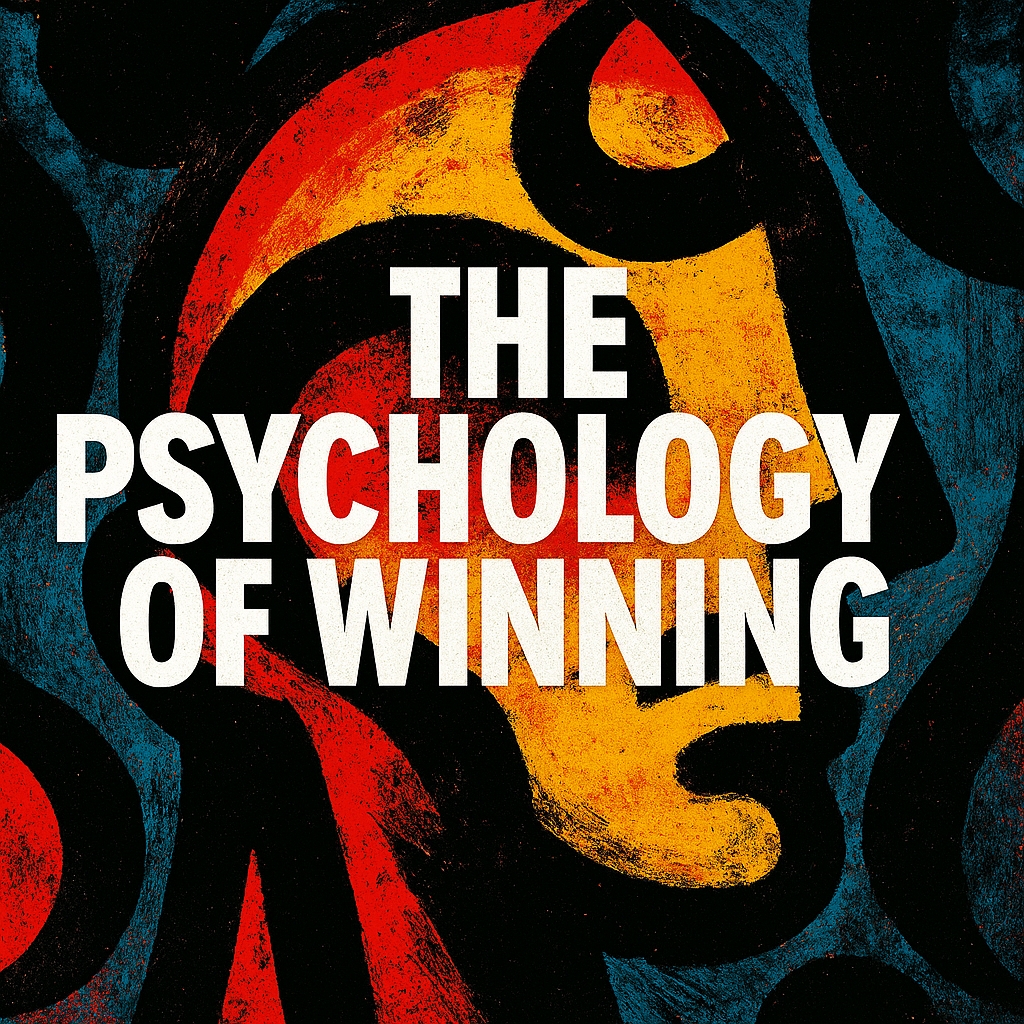
Megan Rapinoe – Precision, Advocacy, and Global Visibility
Megan Rapinoe is one of the most influential footballers in women’s sport. She won two FIFA Women’s World Cups with the United States in 2015 and 2019. Rapinoe earned the Golden Boot and Golden Ball at the 2019 tournament. She also won Olympic gold in 2012. Her crossing accuracy and set-piece delivery are considered elite. Rapinoe has played professionally in the U.S., France, and Australia. She was named The Best FIFA Women’s Player in 2019. Rapinoe advocates for equal pay and LGBTQ+ rights.
She co-founded the athlete-driven media company “The Collective.” Her leadership style combines humor, clarity, and strategic communication. Rapinoe has earned over 200 international caps. She announced her retirement in 2023 after the Women’s World Cup. Her legacy includes performance, activism, and media innovation. Rapinoe remains a symbol of visibility and empowerment. Her career reflects precision, advocacy, and cultural transformation.
| Attribute | Detail | Impact |
|---|---|---|
| World Cup wins | 2 | Team leadership and execution |
| Olympic medal | 1 gold | Multi-format success |
| Individual awards | Golden Boot, Golden Ball | Tournament dominance |
| Advocacy | Equal pay, LGBTQ+ rights | Cultural and policy influence |
| Career caps | 200+ | Longevity and consistency |
Ellyse Perry – Dual-Sport Excellence and Cricketing Evolution
Ellyse Perry is the only Australian to represent her country in both cricket and football World Cups. She debuted for the national cricket team at age 16. Perry has won multiple ICC Women’s World Cups and T20 World Cups. She was named ICC Women’s Cricketer of the Year in 2017 and 2019. Her bowling averages and strike rates rank among the best in women’s cricket.
Perry scored a double century in a Test match against England in 2017. She has taken over 300 international wickets across formats. Her fielding and athleticism set new standards in women’s sport. Perry’s football career included appearances at the 2011 FIFA Women’s World Cup. She trains with high-performance protocols across strength, recovery, and skill. Perry’s influence extends into youth sport and media representation. She has authored books and launched mentorship programs. Her legacy includes dual-sport mastery and cultural leadership. Perry remains a symbol of versatility and elite execution.
| Attribute | Detail | Impact |
|---|---|---|
| Dual-sport career | Cricket and football | Rare international crossover |
| World Cup wins | Multiple formats | Team success and consistency |
| Test double century | 213* vs England | Historic batting feat |
| Bowling record | 300+ wickets | All-format dominance |
| Legacy | Youth mentorship | Cultural and athletic leadership |
Alex Zanardi – Recovery, Reinvention, and Para-Cycling Excellence
Alex Zanardi is a former Formula One driver turned Paralympic champion. He lost both legs in a racing accident in 2001. Zanardi returned to sport through handcycling. He won four Paralympic gold medals in road cycling events. His training included upper-body conditioning and custom equipment design. Zanardi competed in the H4 classification for athletes with lower limb impairments. He won multiple World Championship titles in para-cycling. His comeback was widely covered in global media.
Zanardi also competed in Ironman triathlons. He advocated for adaptive sport and rehabilitation programs. His story has been featured in documentaries and books. Zanardi suffered another serious injury in 2020 but continues rehabilitation. His legacy includes resilience, reinvention, and technical mastery. He remains a symbol of recovery and elite adaptation. Zanardi’s career reflects transformation through sport.
| Attribute | Detail | Impact |
|---|---|---|
| Paralympic golds | 4 | Multi-Games success |
| Sport transition | Racing to cycling | Reinvention and adaptation |
| Classification | H4 | Technical specialization |
| Comeback | Post-2001 accident | Global inspiration |
| Advocacy | Rehabilitation and sport | Expanded access and visibility |
Nadia Comăneci – Perfection, Precision, and Olympic History
Nadia Comăneci is the first gymnast to score a perfect 10.0 at the Olympic Games. She achieved this historic feat at the 1976 Montreal Olympics at age 14. Comăneci earned five Olympic gold medals across the 1976 and 1980 Games. Her perfect score was so unprecedented that the scoreboard could not display it properly. She won gold in the all-around, uneven bars, and balance beam in 1976. Comăneci’s routines were known for difficulty, elegance, and flawless execution.
She trained under Béla and Márta Károlyi in Romania. Her performances helped popularize gymnastics worldwide. Comăneci won nine Olympic medals in total. She retired from competition in 1984. After defecting from Romania in 1989, she settled in the United States. Comăneci became a coach, author, and advocate for youth sport. She was named one of the Athletes of the Century by the Laureus World Sports Academy. Her legacy includes technical innovation and cultural transformation. Comăneci remains a symbol of perfection and courage.
| Attribute | Detail | Impact |
|---|---|---|
| Olympic perfect 10 | First in history | Redefined scoring standards |
| Olympic medals | 9 total | Multi-event excellence |
| Age at breakthrough | 14 | Youth achievement |
| Coaching legacy | Post-retirement | Mentorship and development |
| Cultural impact | Global icon | Popularized gymnastics worldwide |
Ian Thorpe – Hydrodynamics, Power, and Australian Legacy
Ian Thorpe is one of Australia’s most successful Olympians. He won five Olympic gold medals and nine total Olympic medals. Thorpe competed in the 2000 and 2004 Olympic Games. He became the youngest male world champion in swimming at age 15. Thorpe set 13 individual long-course world records during his career. His size 17 feet and flexible ankles contributed to his powerful kick. He specialized in freestyle events from 100m to 800m. Thorpe’s stroke technique emphasized long, efficient pulls and minimal drag. He won six gold medals at the 2001 World Championships in Fukuoka.
Thorpe retired in 2006 and briefly returned to competition in 2011. He has worked as a broadcaster and mental health advocate. Thorpe publicly came out as gay in 2014, becoming a prominent LGBTQ+ voice in sport. He was named Australian of the Year in 2000. His legacy includes performance, advocacy, and national pride. Thorpe remains a symbol of excellence and authenticity.
| Attribute | Detail | Impact |
|---|---|---|
| Olympic medals | 9 total | Most by an Australian swimmer |
| World records | 13 | Freestyle dominance |
| Career span | 1997–2006, 2011–2012 | Early peak and comeback |
| Advocacy | Mental health and LGBTQ+ rights | Cultural leadership |
| Honors | Australian of the Year | National recognition |
Rachael Watson – Sprint Focus and Paralympic Breakthrough
Rachael Watson is a Paralympic gold medalist in swimming for Australia. She competes in the S4 classification for athletes with significant physical impairments. Watson won gold in the 50m freestyle at the 2016 Rio Paralympics. She defended her title at the Tokyo 2020 Paralympics. Her stroke technique is adapted for limited limb function. Watson trains with a focus on explosive starts and efficient breathing. She uses resistance tools and water-based strength drills.
Her reaction time off the blocks is among the fastest in her class. Watson was born with cerebral palsy and later developed Guillain-Barré syndrome. She began swimming as part of rehabilitation. Her training includes hydrotherapy and neuromuscular coordination. Watson has won multiple national and international titles. She advocates for disability inclusion in sport. Her performances have inspired young athletes with complex conditions. Watson’s legacy includes precision, perseverance, and elite sprinting. She remains a leader in Australian para-swimming.
| Attribute | Detail | Impact |
|---|---|---|
| Paralympic golds | 2 | Back-to-back titles |
| Classification | S4 | High-impairment sprint class |
| Medical history | CP and GBS | Overcame dual conditions |
| Technique | Sprint-focused | Start and breathing optimization |
| Advocacy | Disability inclusion | Visibility and mentorship |
Dirk Nowitzki – Shooting Range, Loyalty, and Global Influence
Dirk Nowitzki is one of the most successful international players in NBA history. He played 21 seasons with the Dallas Mavericks, the most with a single team. Nowitzki scored over 31,000 career points. He won the NBA MVP award in 2007. Nowitzki was in the team and led the Mavericks to their first NBA championship in 2011. His one-legged fadeaway shot became iconic. He revolutionized the role of the power forward with perimeter shooting. Nowitzki was a 14-time NBA All-Star.
He represented Germany in multiple FIBA tournaments and the Olympics. His training emphasized footwork, balance, and shooting mechanics. Nowitzki’s loyalty to one franchise is rare in modern sport. He mentored younger international players entering the NBA. His jersey number 41 was retired by the Mavericks in 2022. Nowitzki’s legacy includes innovation, consistency, and humility. He remains a symbol of global basketball evolution.
| Attribute | Detail | Impact |
|---|---|---|
| NBA points | 31,560 | Sixth all-time scorer |
| Career span | 21 seasons | Longest with one team |
| Signature move | One-legged fadeaway | Redefined big-man shooting |
| International play | Germany | Global representation |
| Legacy | Innovation and loyalty | Influence on modern basketball |
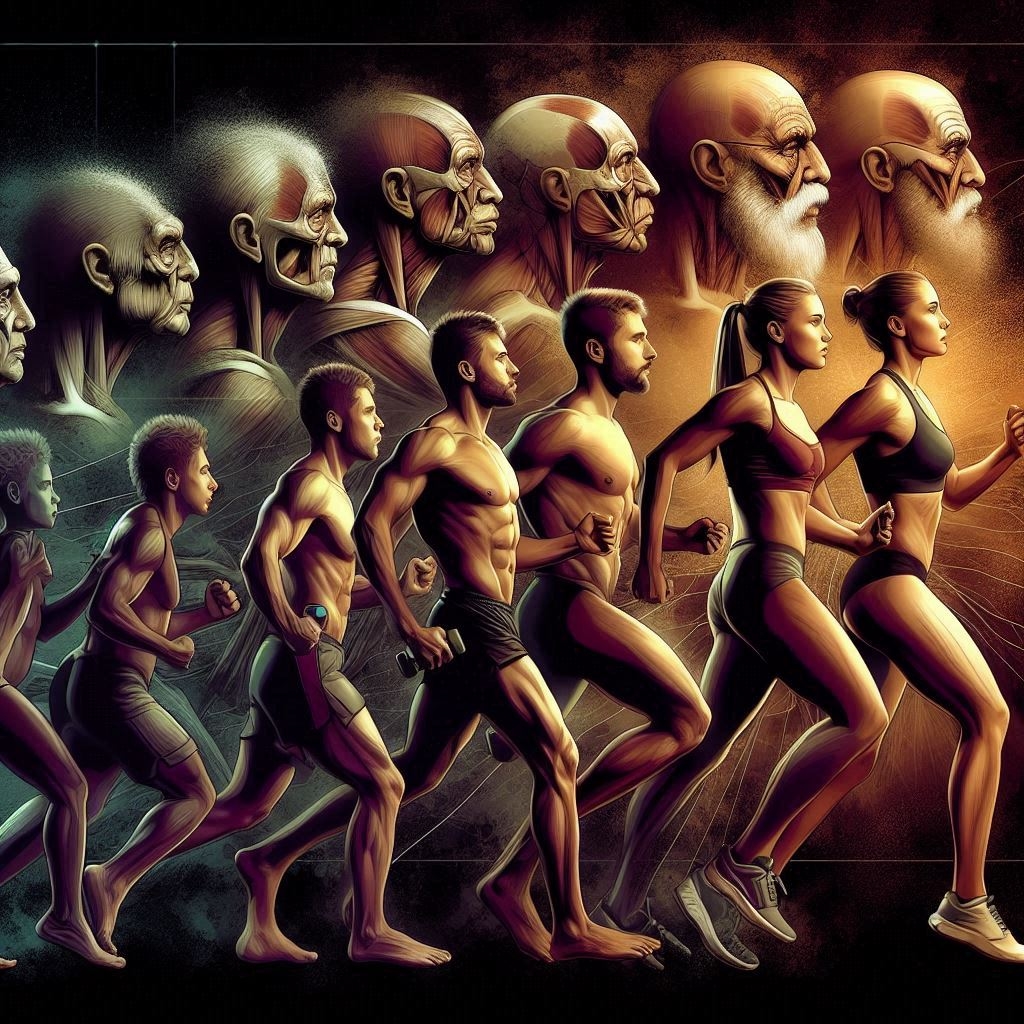
Yui Kamiji – Strategy, Spin, and Wheelchair Tennis Excellence
Yui Kamiji is one of Japan’s most successful wheelchair tennis players. She has won multiple Grand Slam titles in singles and doubles. Kamiji earned a bronze medal in singles at the Tokyo 2020 Paralympics. She also won silver in doubles at the Rio 2016 Games. Her playing style emphasizes spin, angles, and tactical placement. Kamiji has been ranked world No. 1 in both singles and doubles. She trains with adaptive equipment and precision drills. Her mobility and chair control are considered elite.
Kamiji has won the French Open singles title four times. She frequently partners with Jordanne Whiley in doubles events. Her serve and return patterns are optimized for court geometry. Kamiji advocates for disability sport visibility in Asia. She has competed in over 30 Grand Slam events. Her consistency across surfaces is rare in para-tennis. Kamiji’s legacy includes technical mastery and regional leadership. She remains a symbol of precision and perseverance.
| Attribute | Detail | Impact |
|---|---|---|
| Grand Slam titles | Multiple | Singles and doubles success |
| Paralympic medals | Bronze, silver | Multi-Games achievement |
| World rankings | No. 1 in both formats | Sustained excellence |
| Playing style | Spin and angles | Tactical control |
| Advocacy | Disability sport in Asia | Regional visibility and growth |
Valentina Vezzali – Reflexes, Records, and Fencing Dominance
Valentina Vezzali is the most decorated fencer in Olympic history. She won six Olympic gold medals and nine Olympic medals overall. Vezzali competed in five Olympic Games from 1996 to 2012. Her discipline was foil, known for speed and precision. She won 16 World Championship medals, including six golds. Vezzali’s reaction time and blade control were considered elite. She trained with high-speed drills and tactical simulations. Her footwork and distance management were textbook examples.
Vezzali won gold in both individual and team formats. She was Italy’s flag bearer at the London 2012 Olympics. After retiring, she entered politics and served in the Italian Parliament. Vezzali advocates for youth sport and gender equity. Her legacy includes performance, leadership, and civic engagement. She remains a symbol of fencing excellence and national pride. Vezzali’s career reflects reflexes, records, and strategic mastery.
| Attribute | Detail | Impact |
|---|---|---|
| Olympic medals | 9 total | Most in fencing history |
| World titles | 6 golds | International dominance |
| Career span | 1996–2012 | Longevity and consistency |
| Discipline | Foil | Speed and precision |
| Public service | Parliament member | Civic leadership and advocacy |
Conclusion – Greatness Is Built Over Time, Across Borders
The greatest athletes do not simply win. They transform their sport. They train with purpose, compete with precision, and adapt with resilience. Their greatness is earned through results, not reputation. They overcome injury, pressure, and systemic barriers. They redefine technique and strategy. They influence how others train and play. Their legacy includes records, titles, and cultural transformation. Greatness spans gender, geography, and ability. It is built on facts, not hype. This editorial honors athletes who changed their sport. Their stories offer insight into elite achievement. Their impact continues across generations. Greatness is not a moment. It is a lifetime of mastery.
Join the Discussion
Who do you believe belongs on this list? What defines greatness in your sport?
#GreatestAthletes #SportingLegacy #ParaAthleteExcellence #FemaleAthletePower #MaleAthleteDominance #PerformanceOverHype #FactBasedSport #GlobalSportIcons
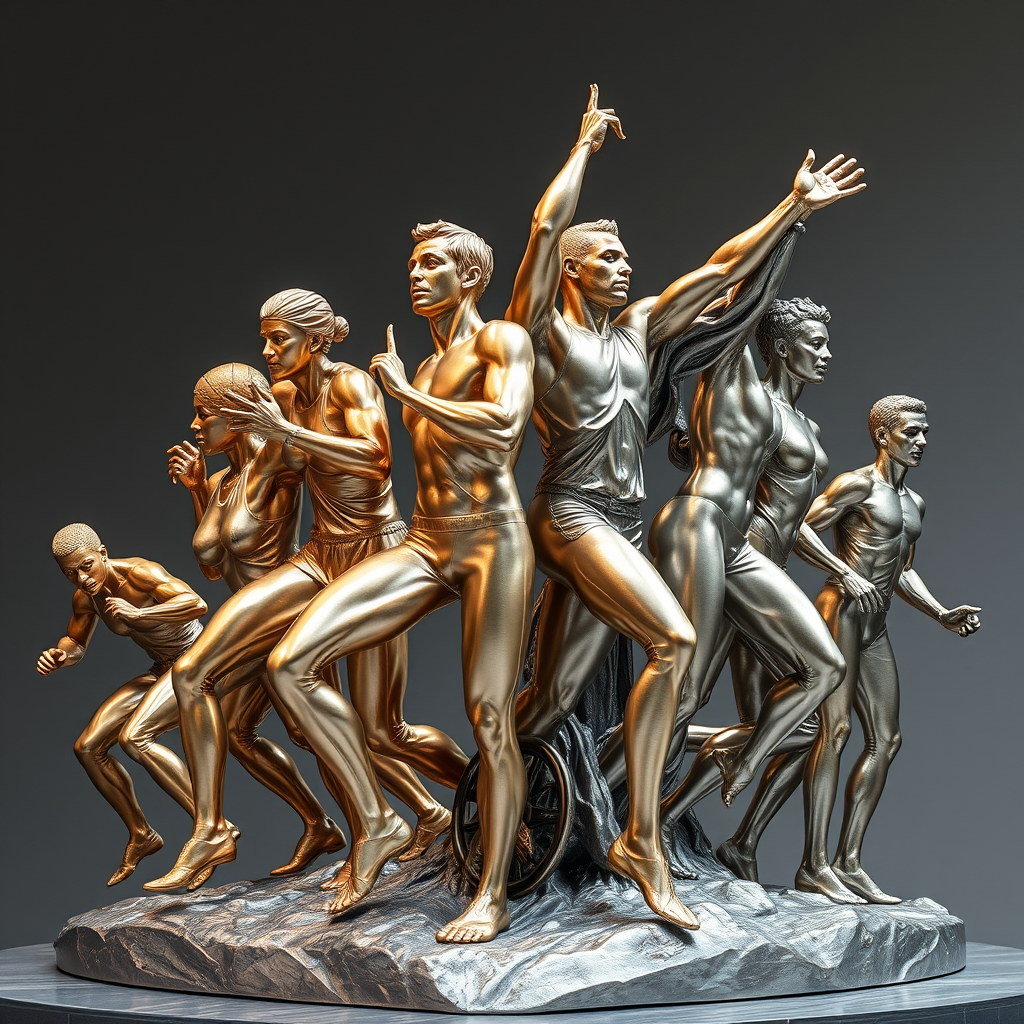



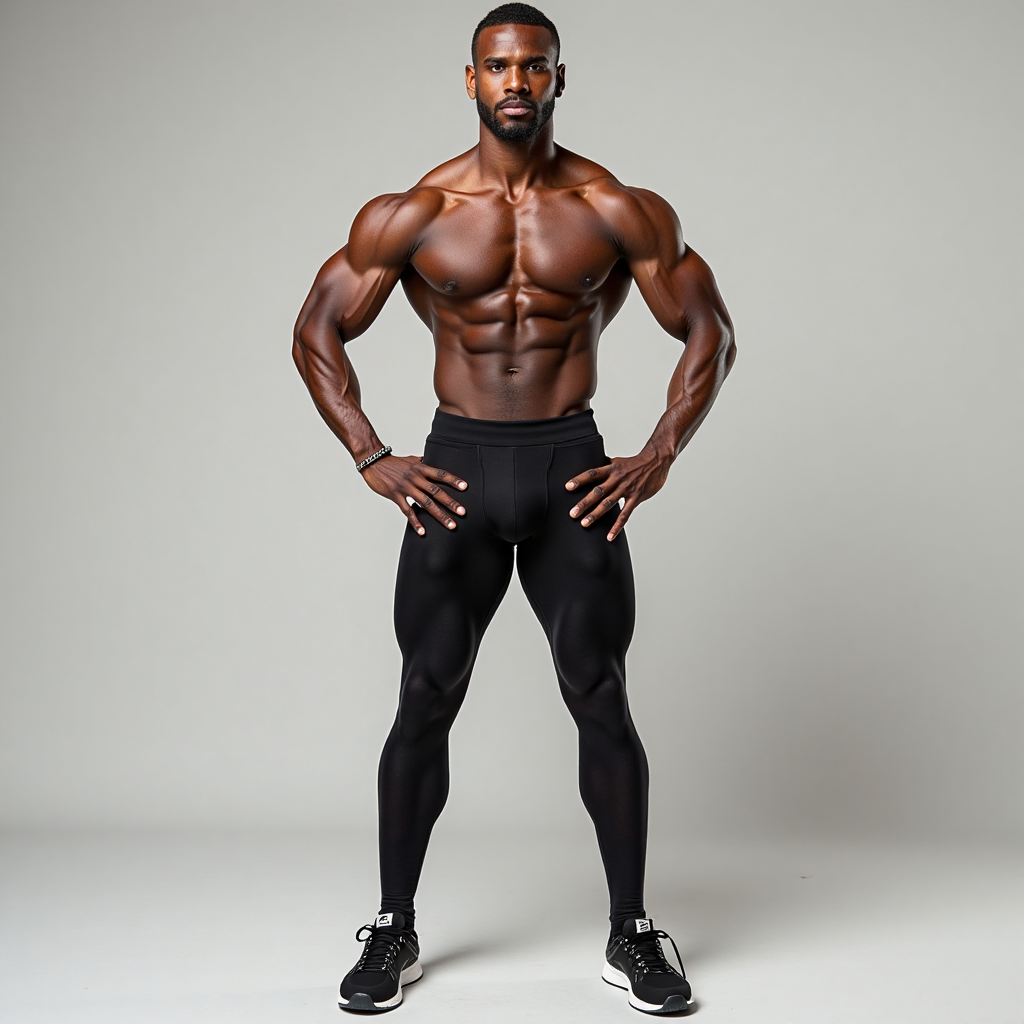


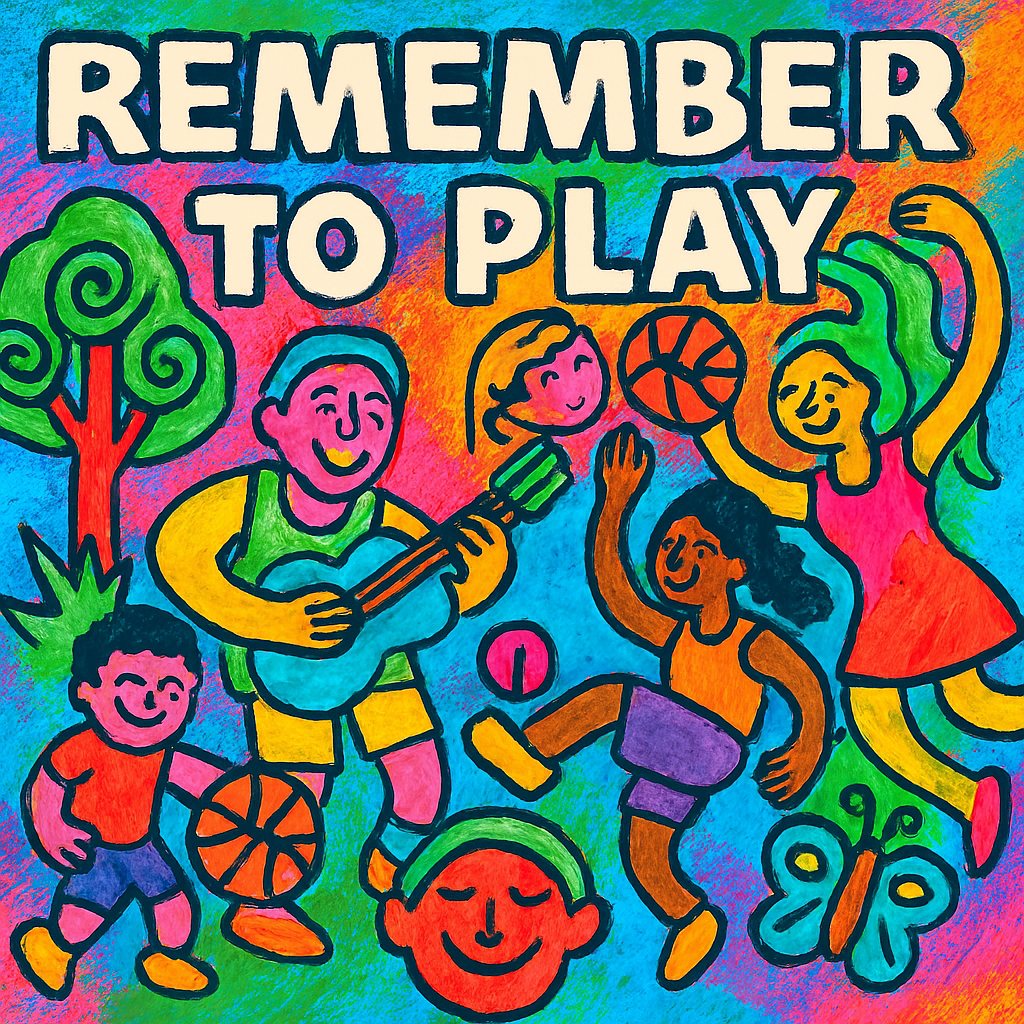


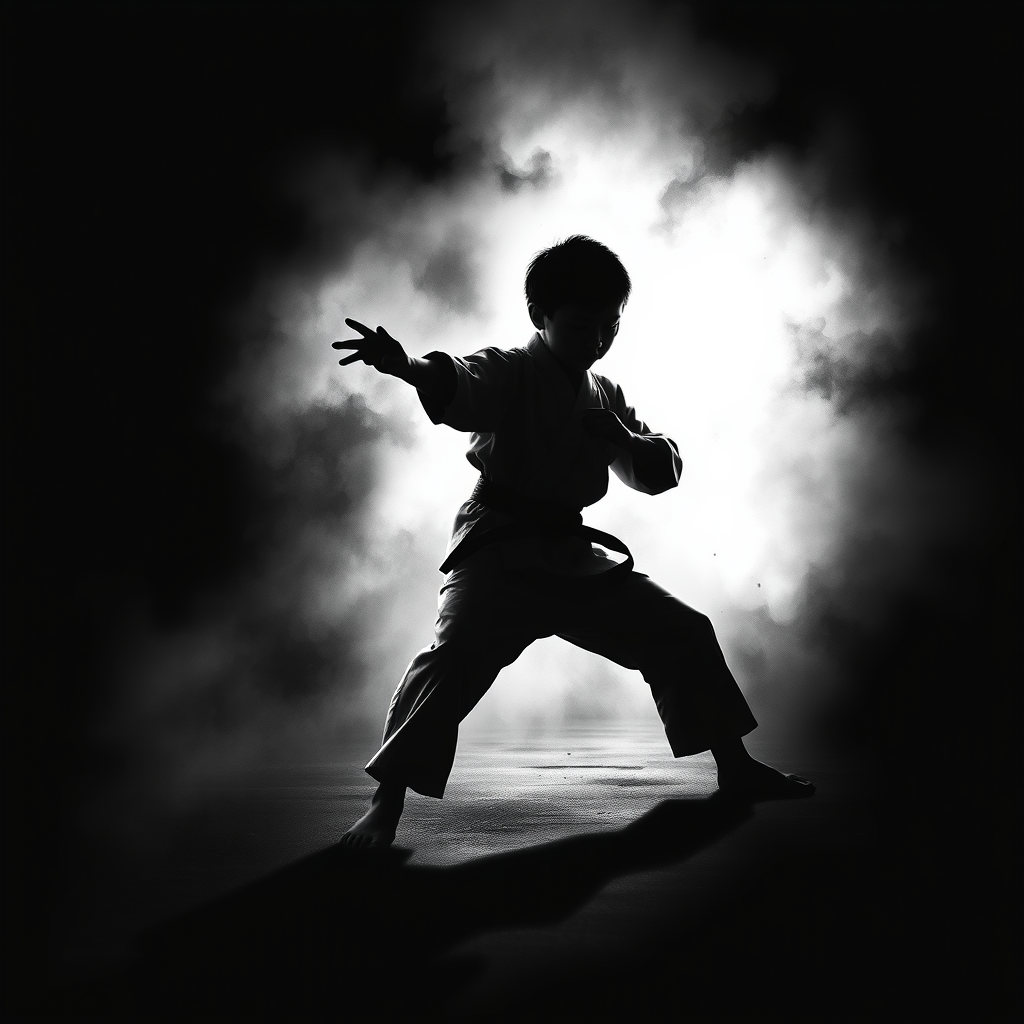
Leave a Reply